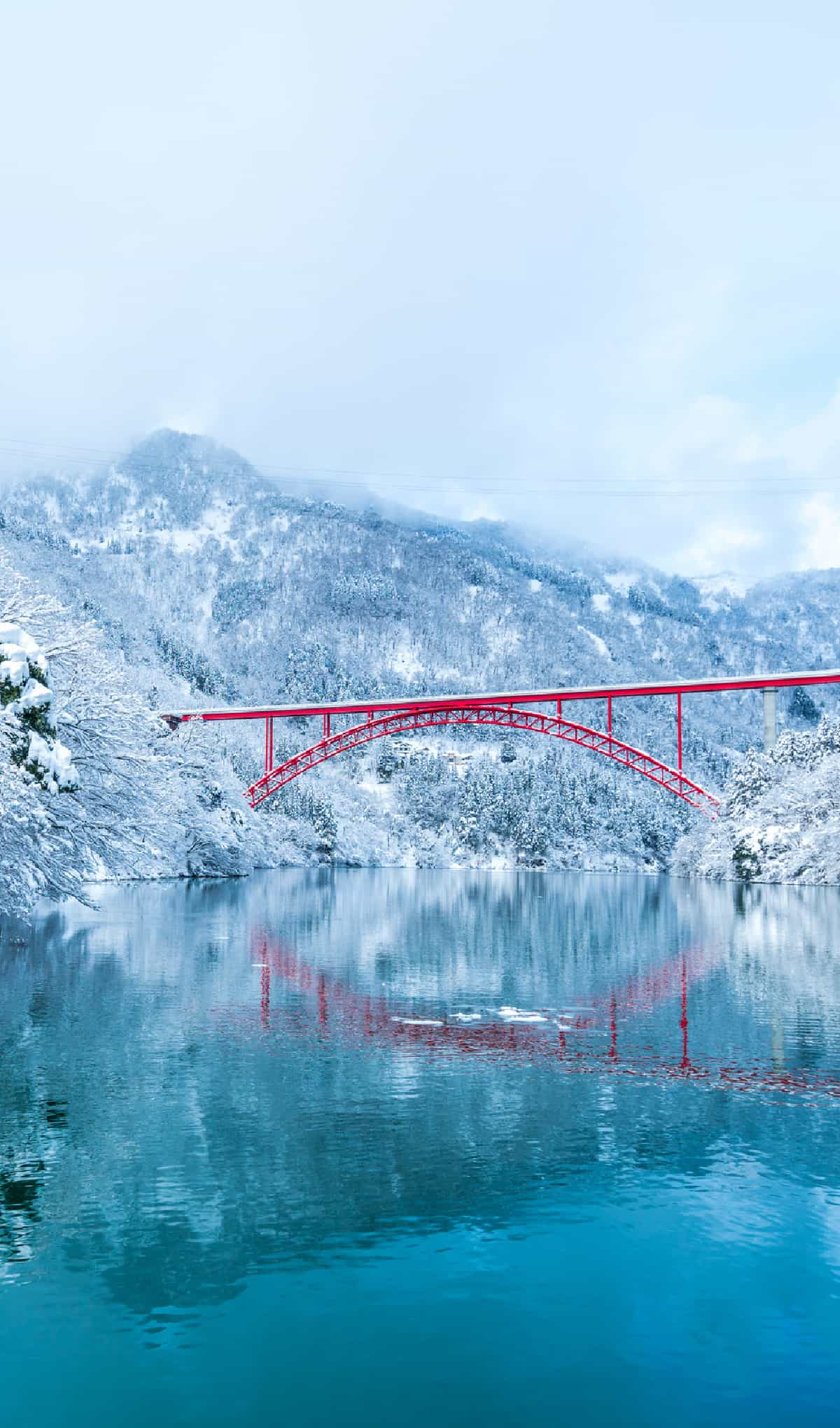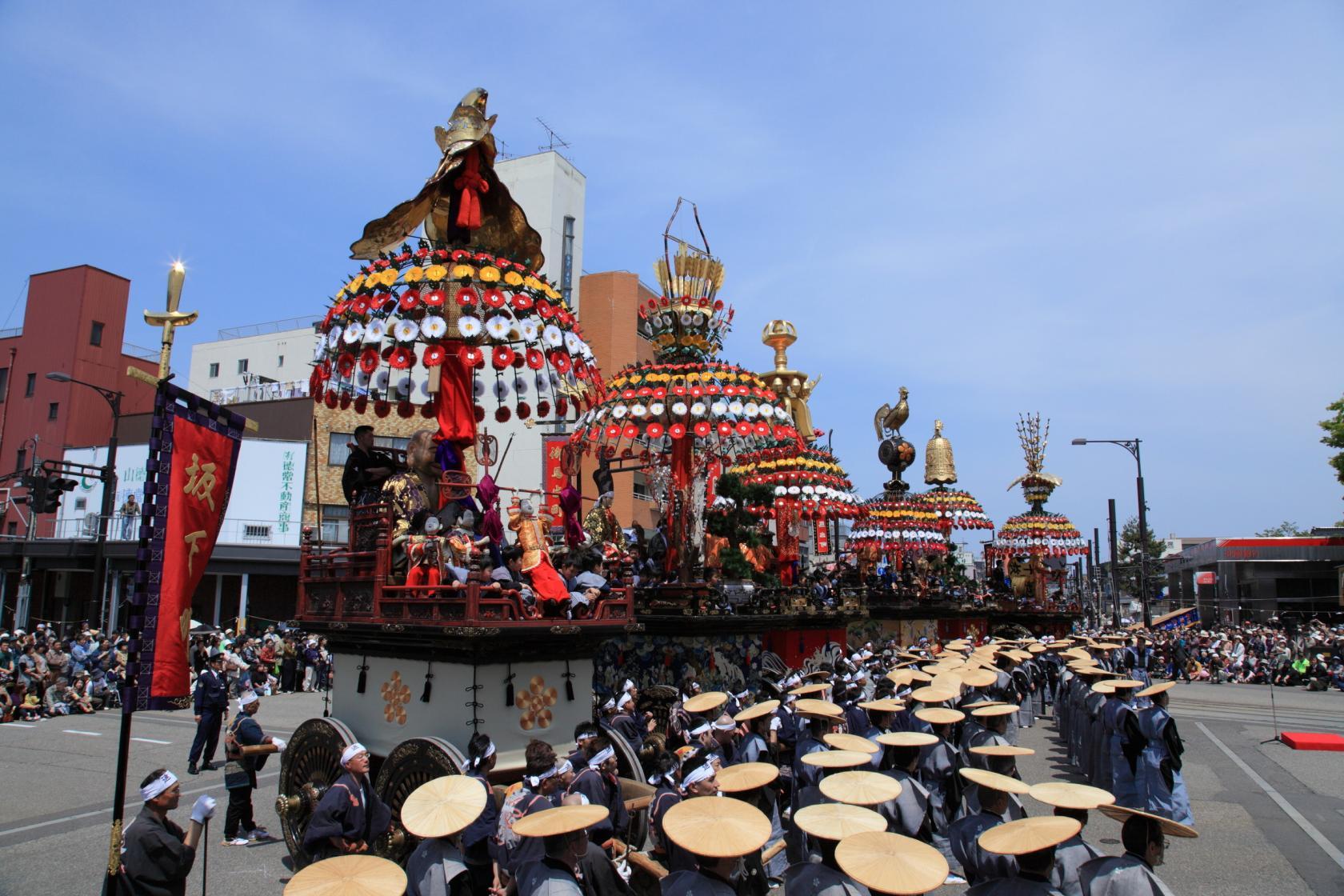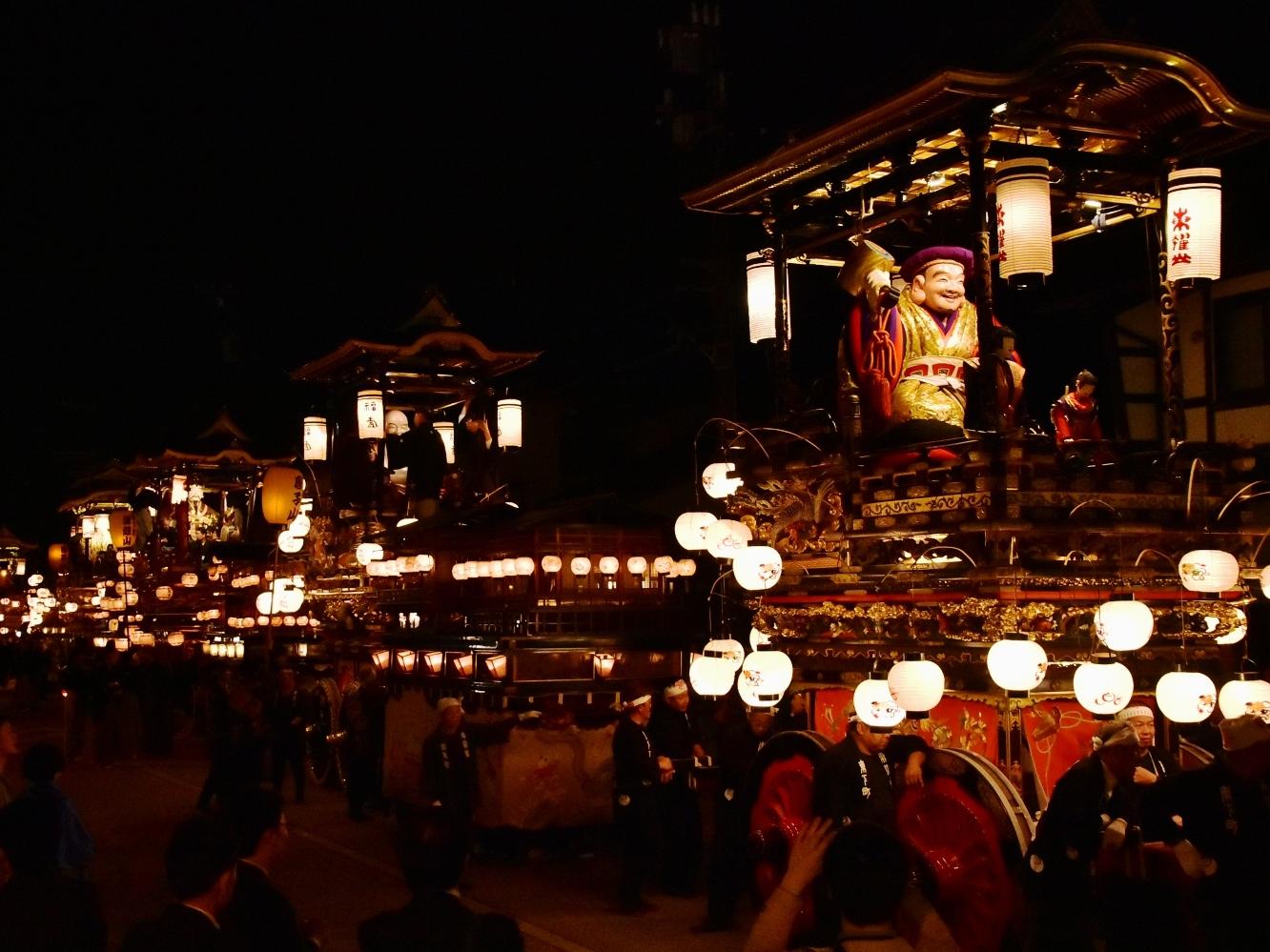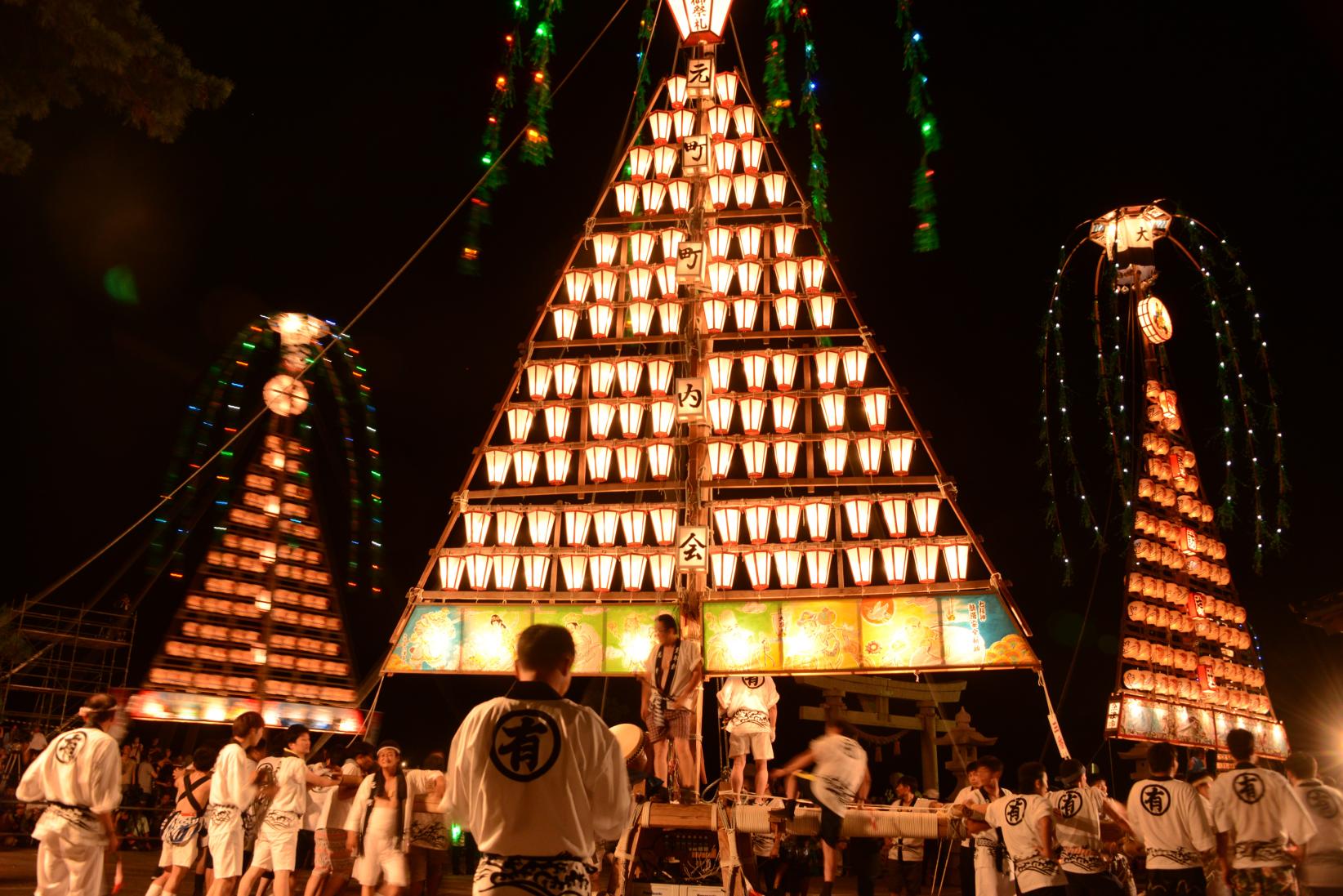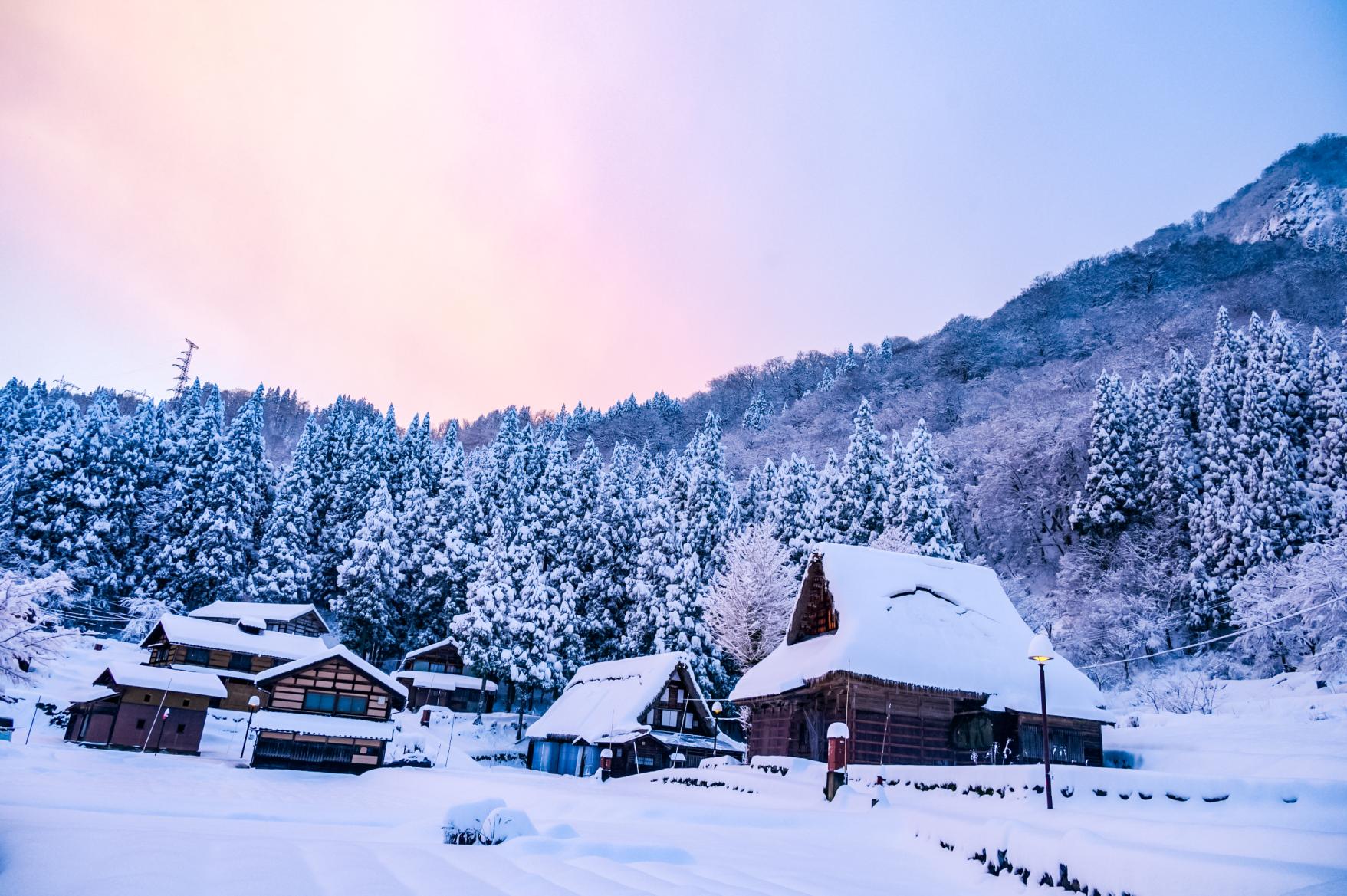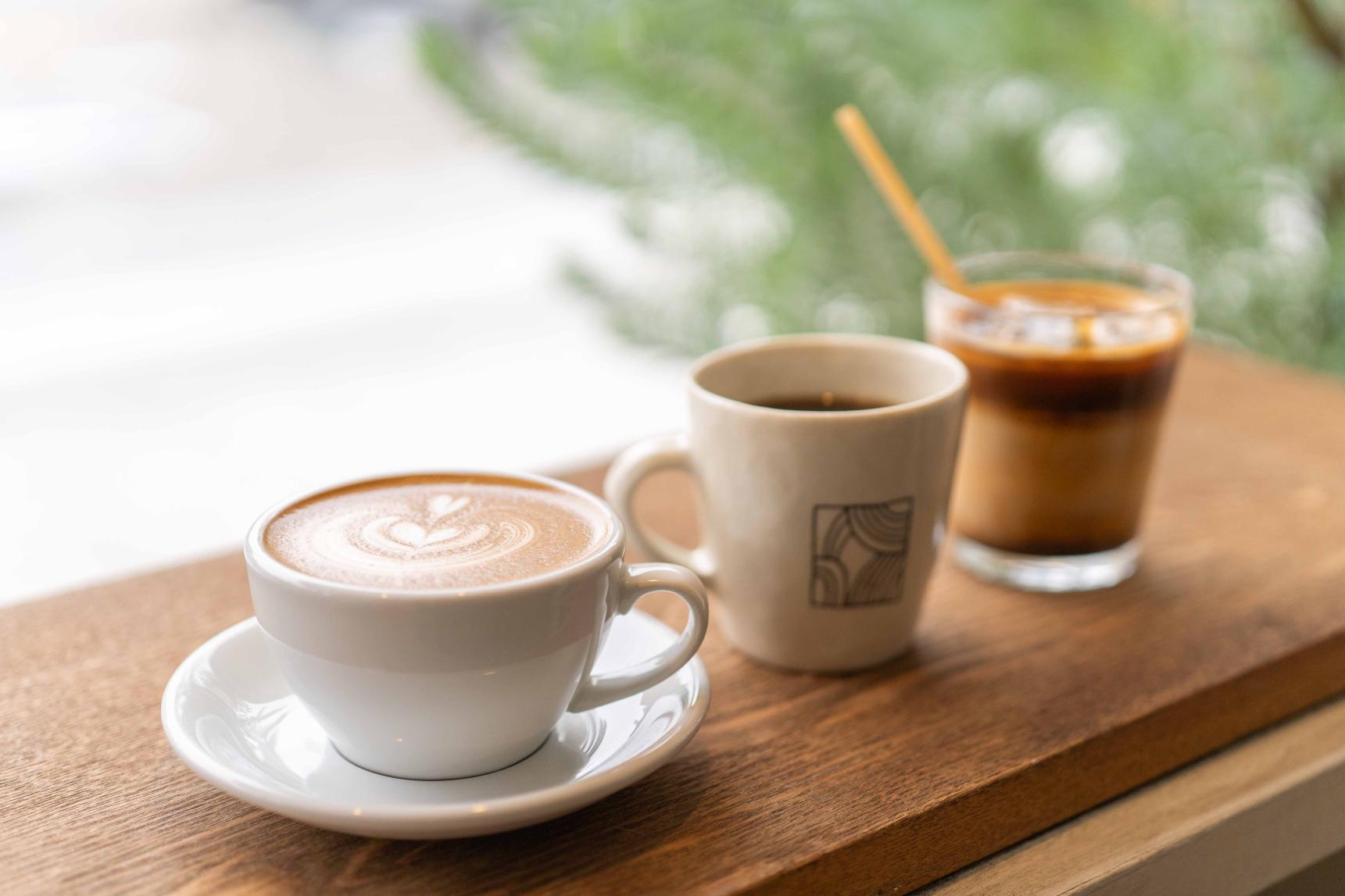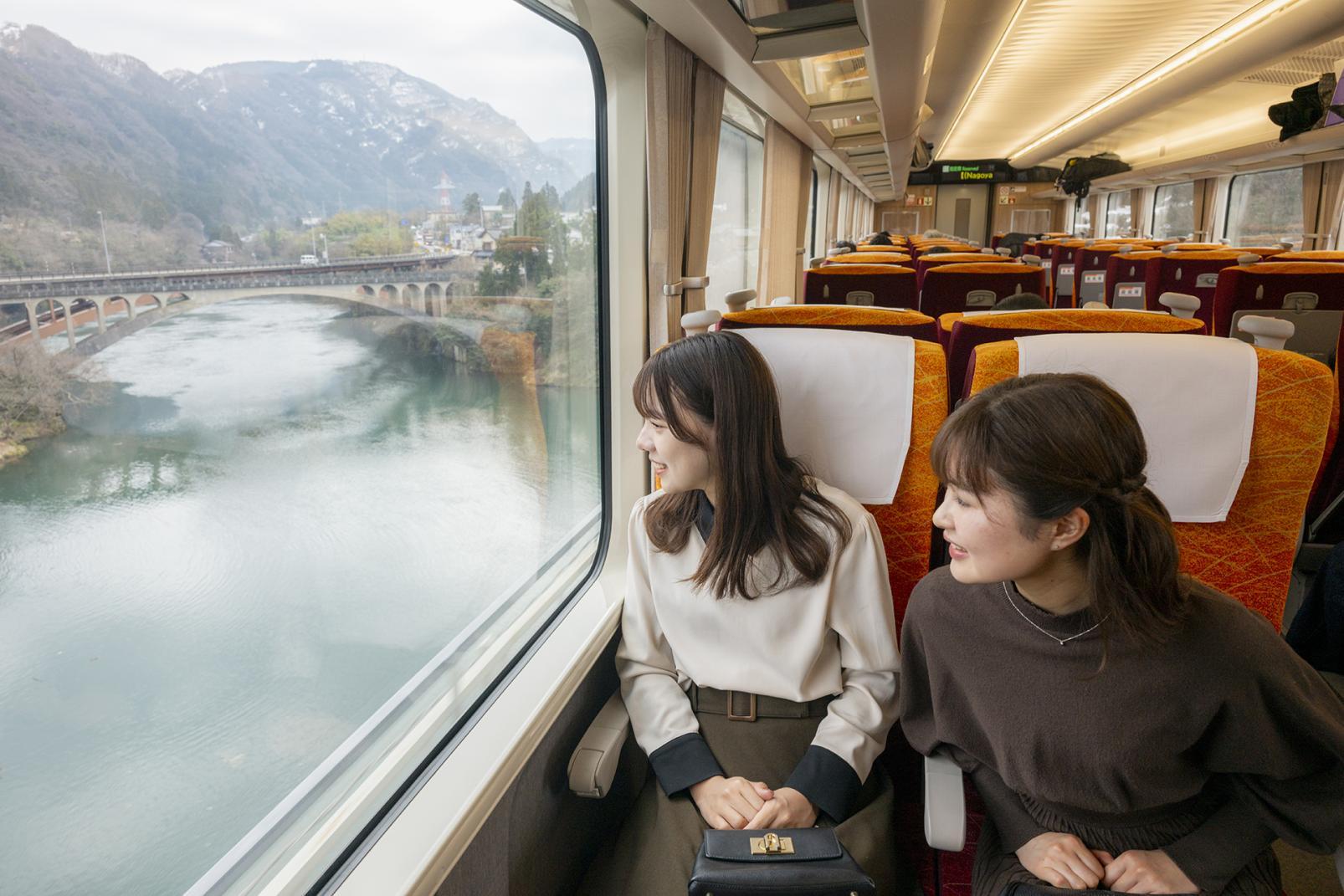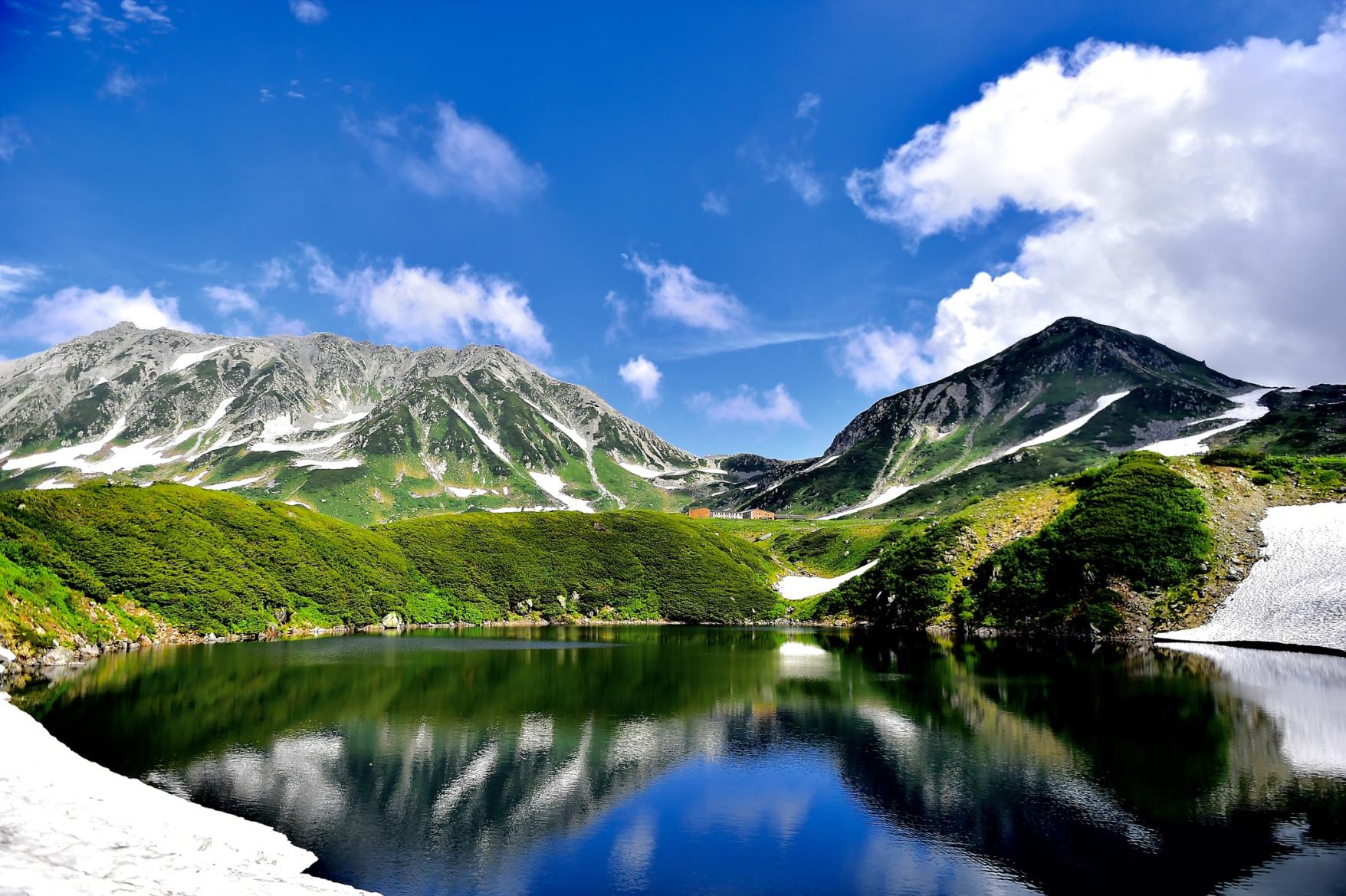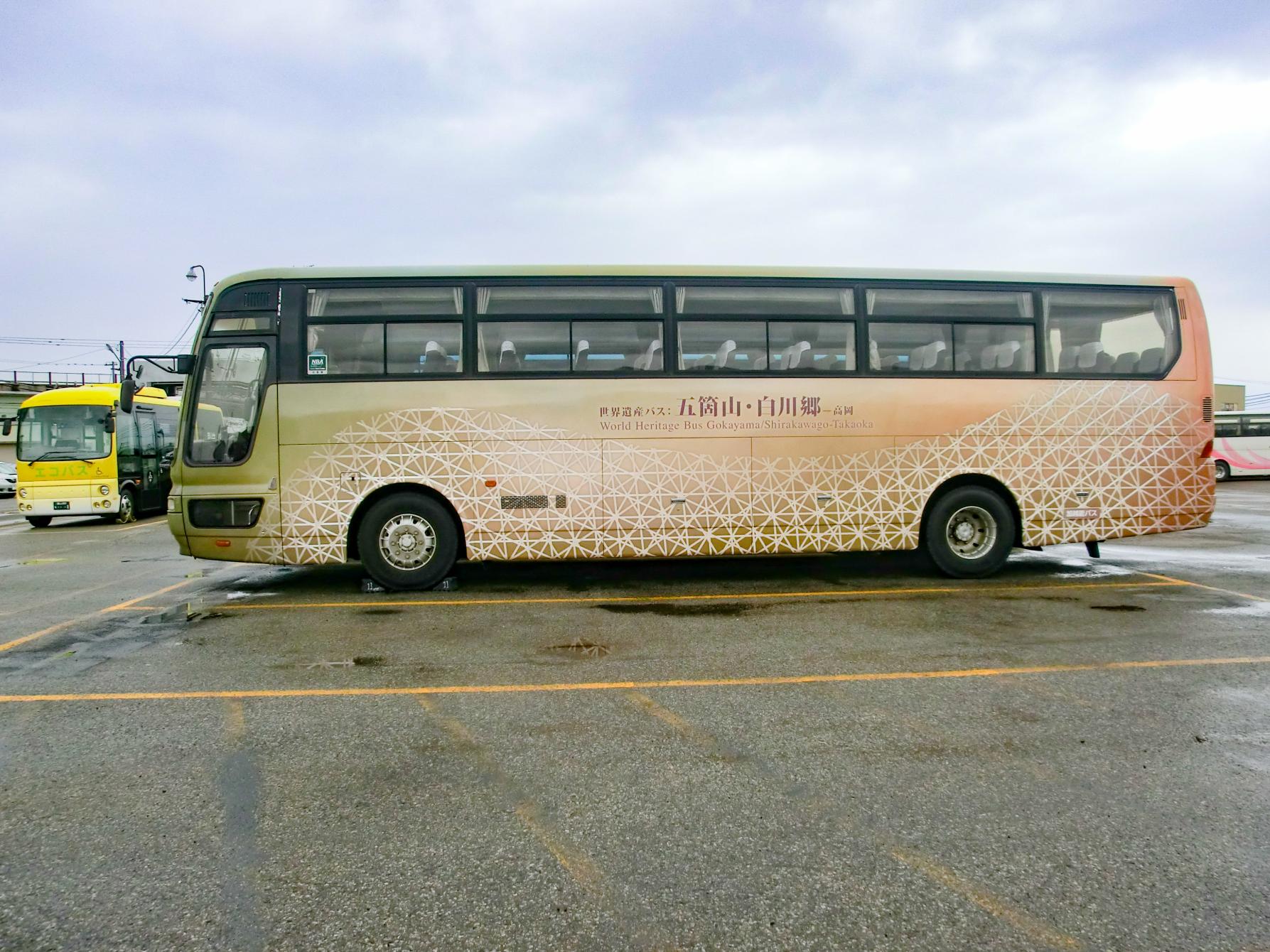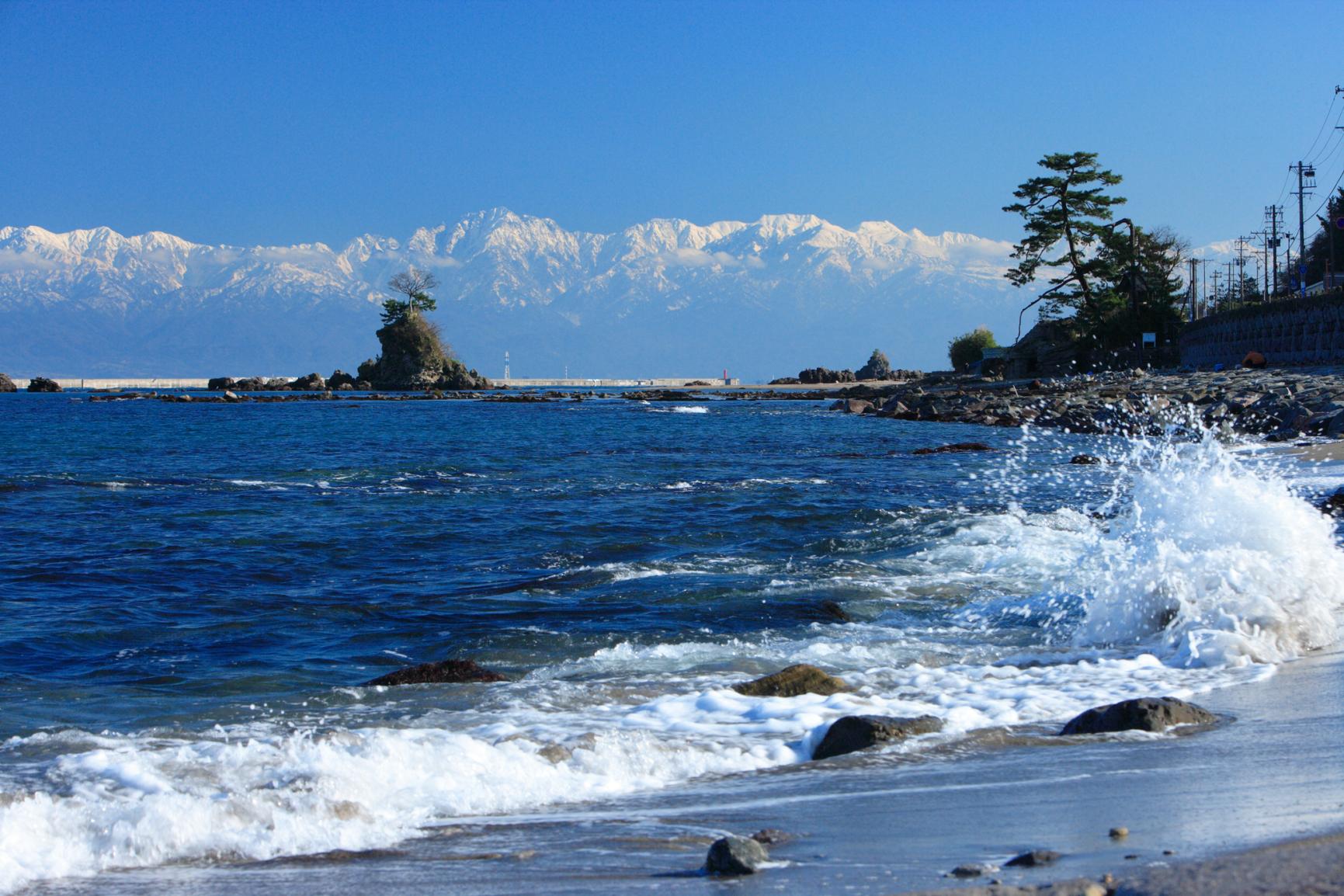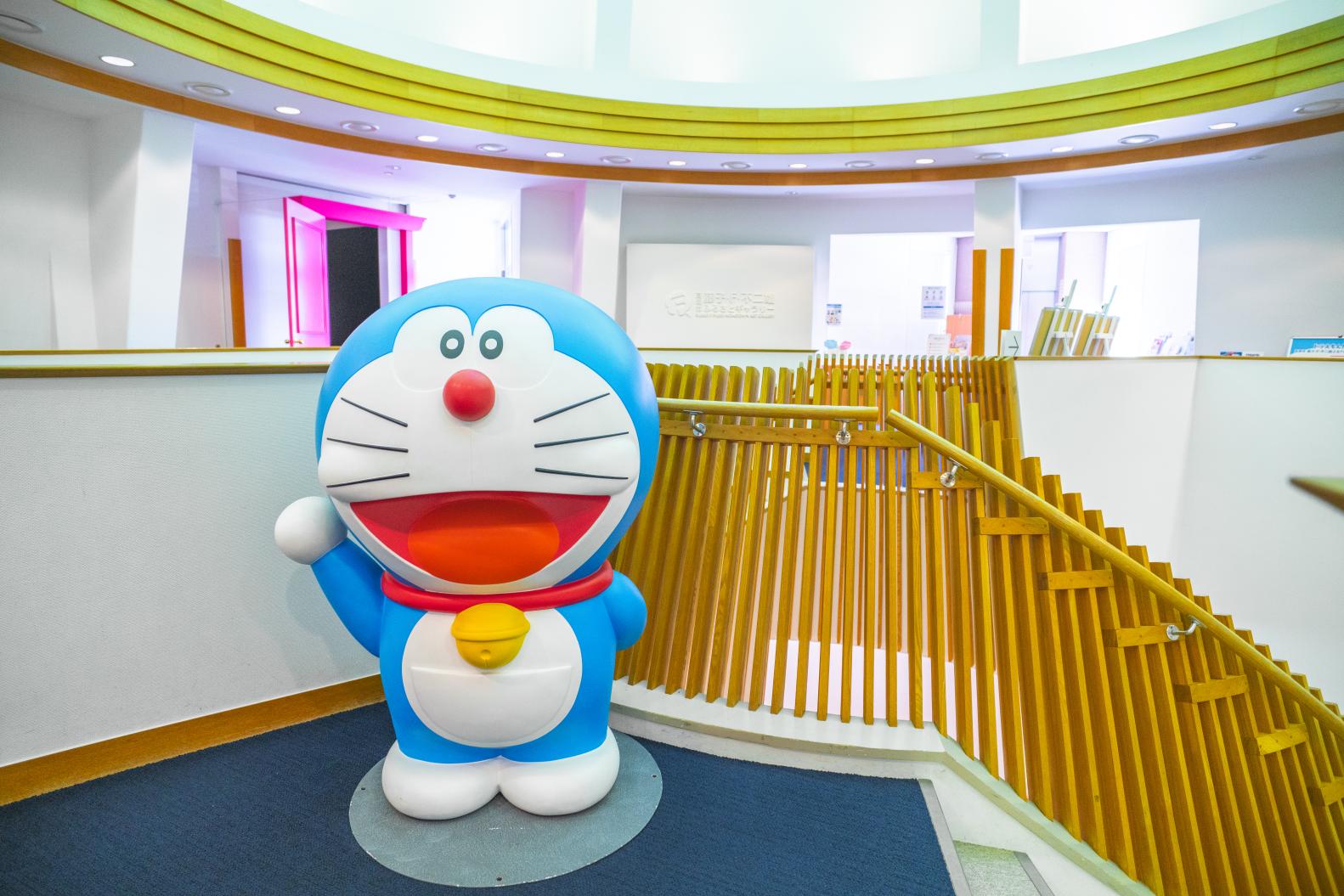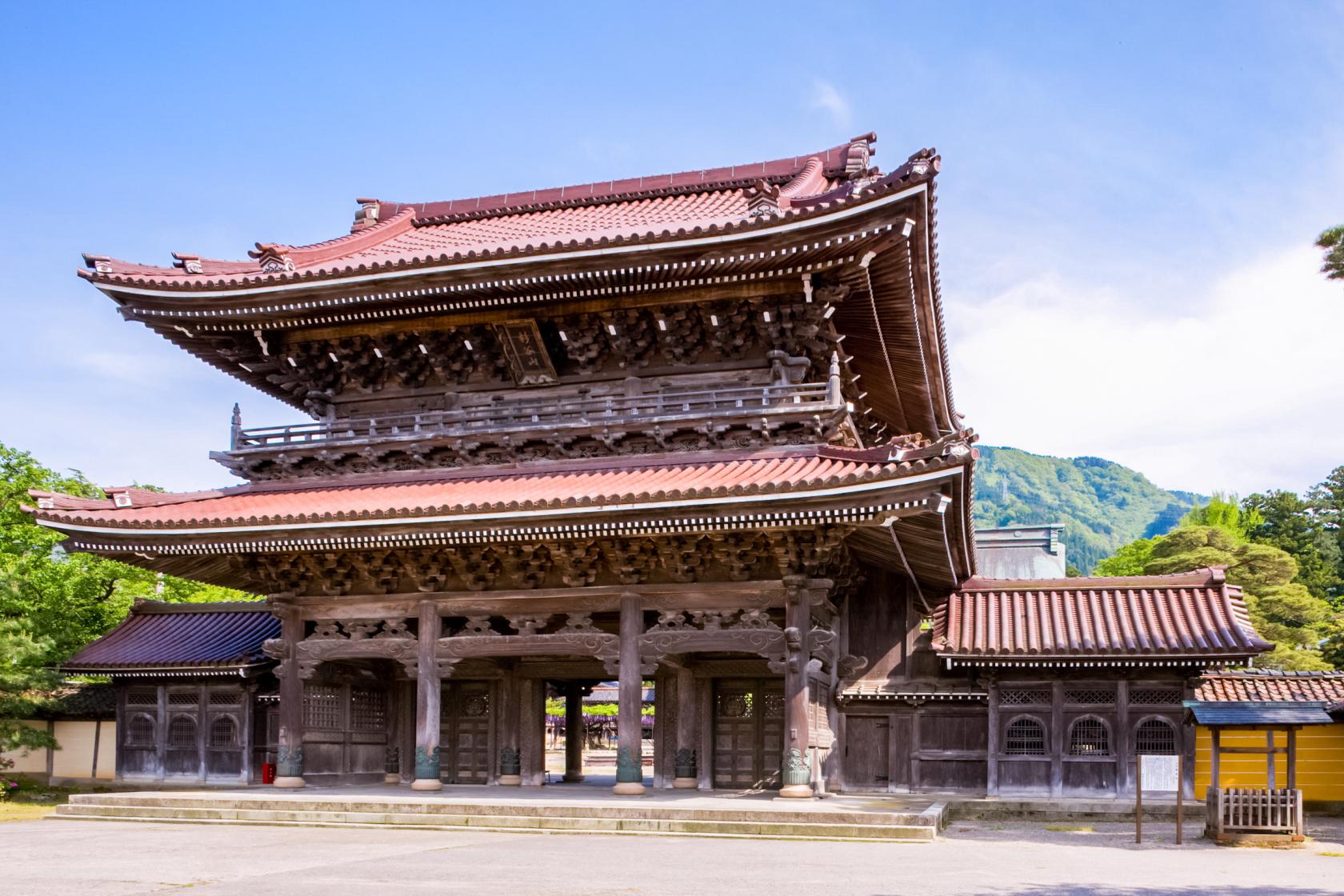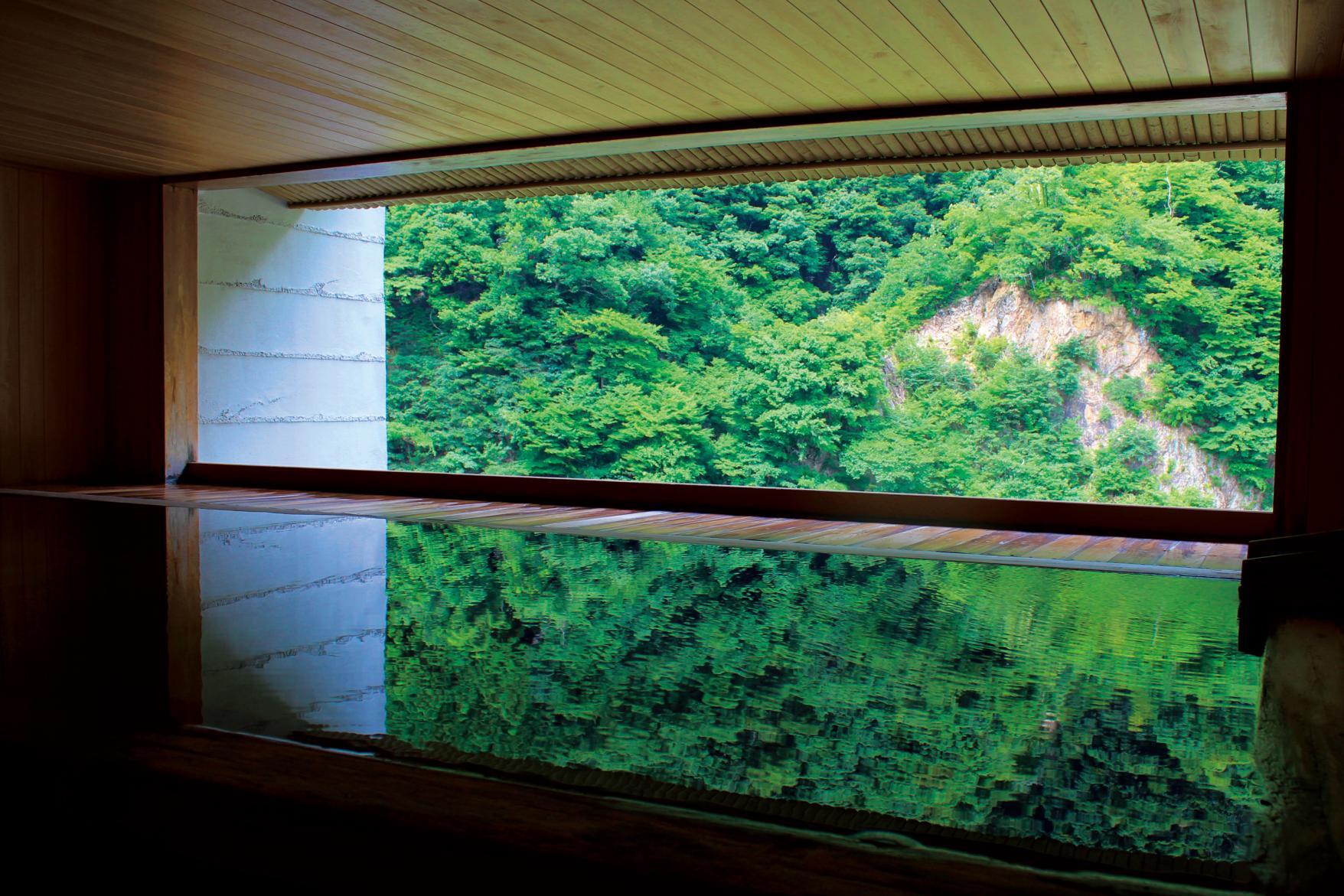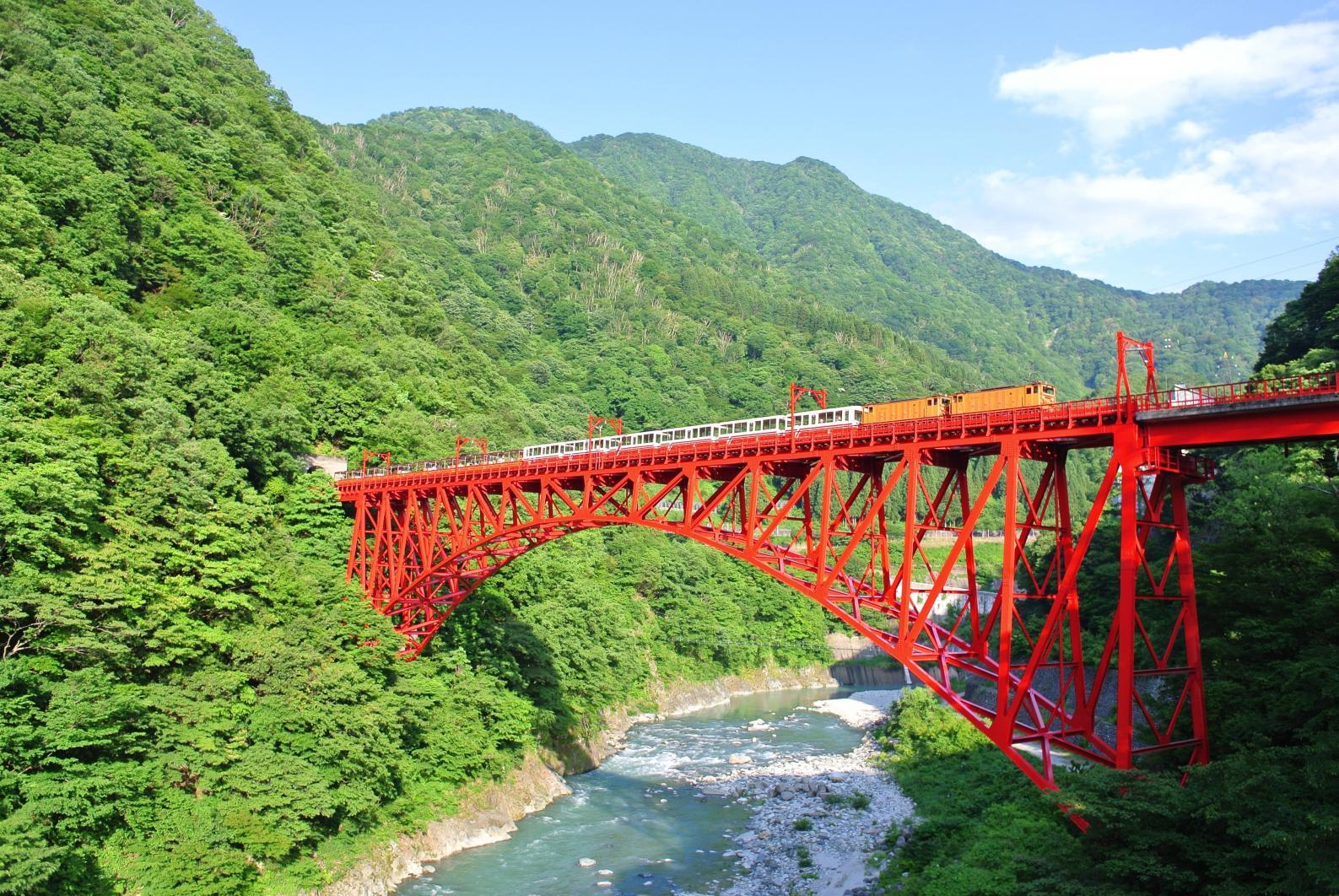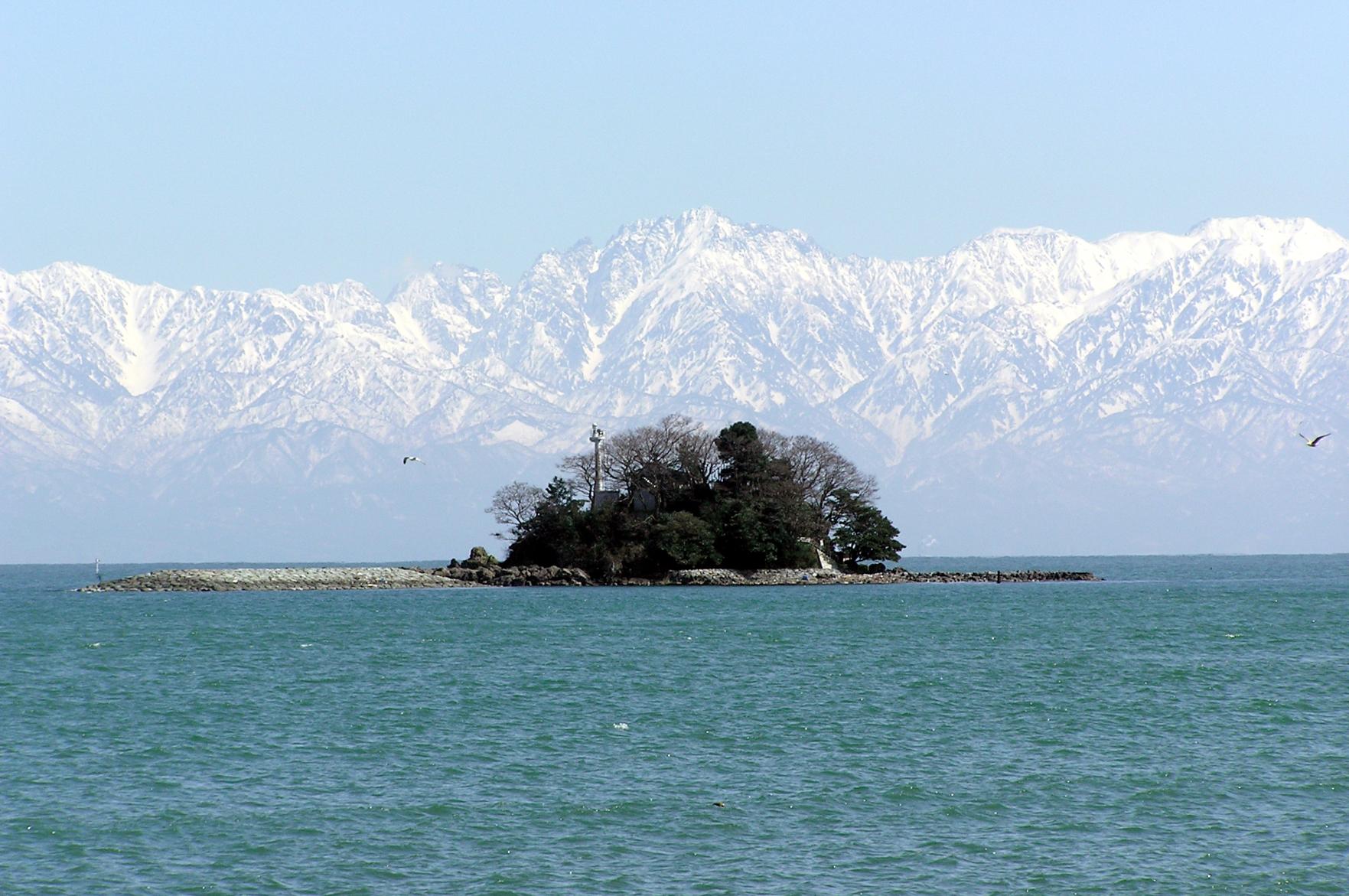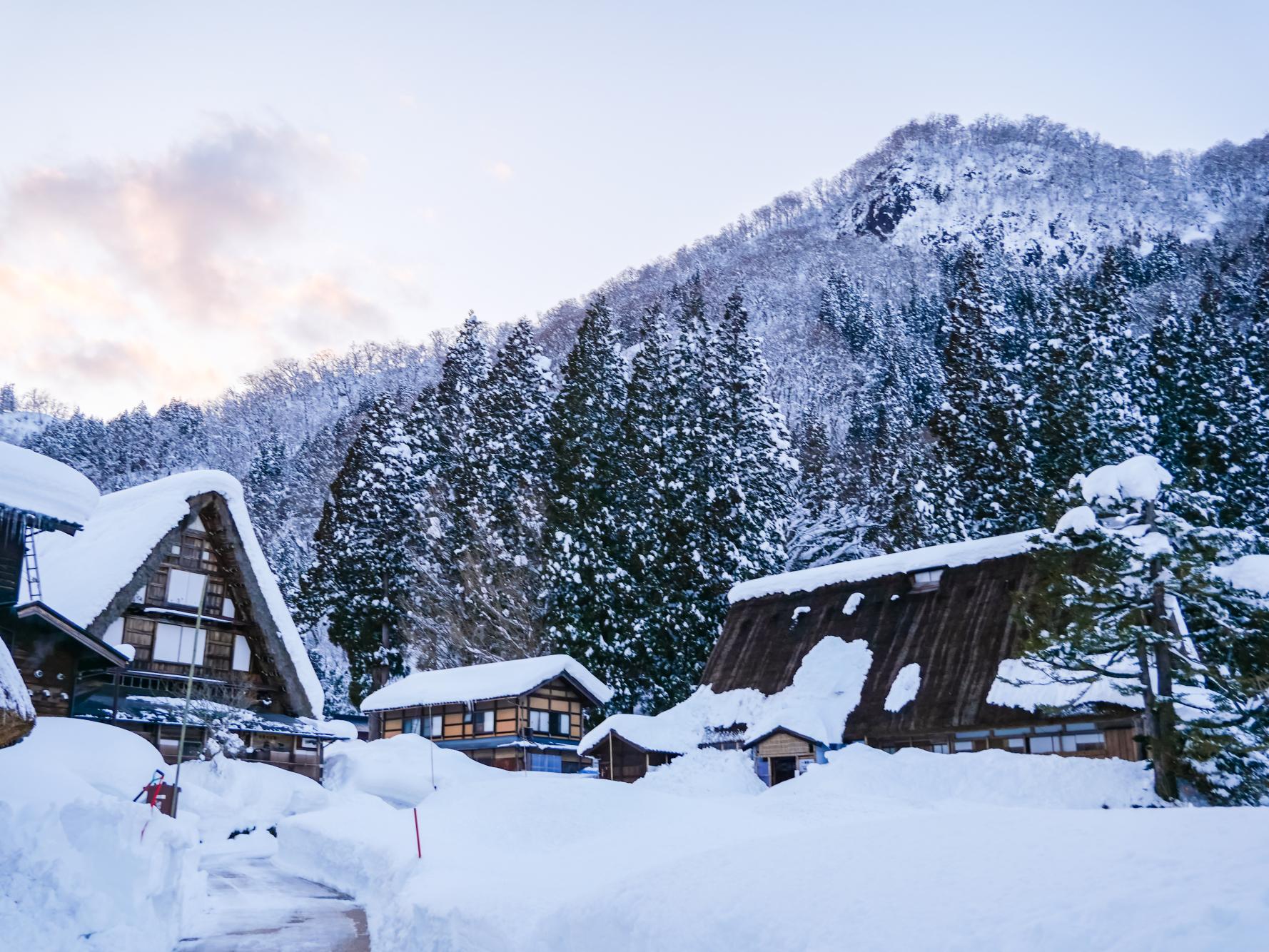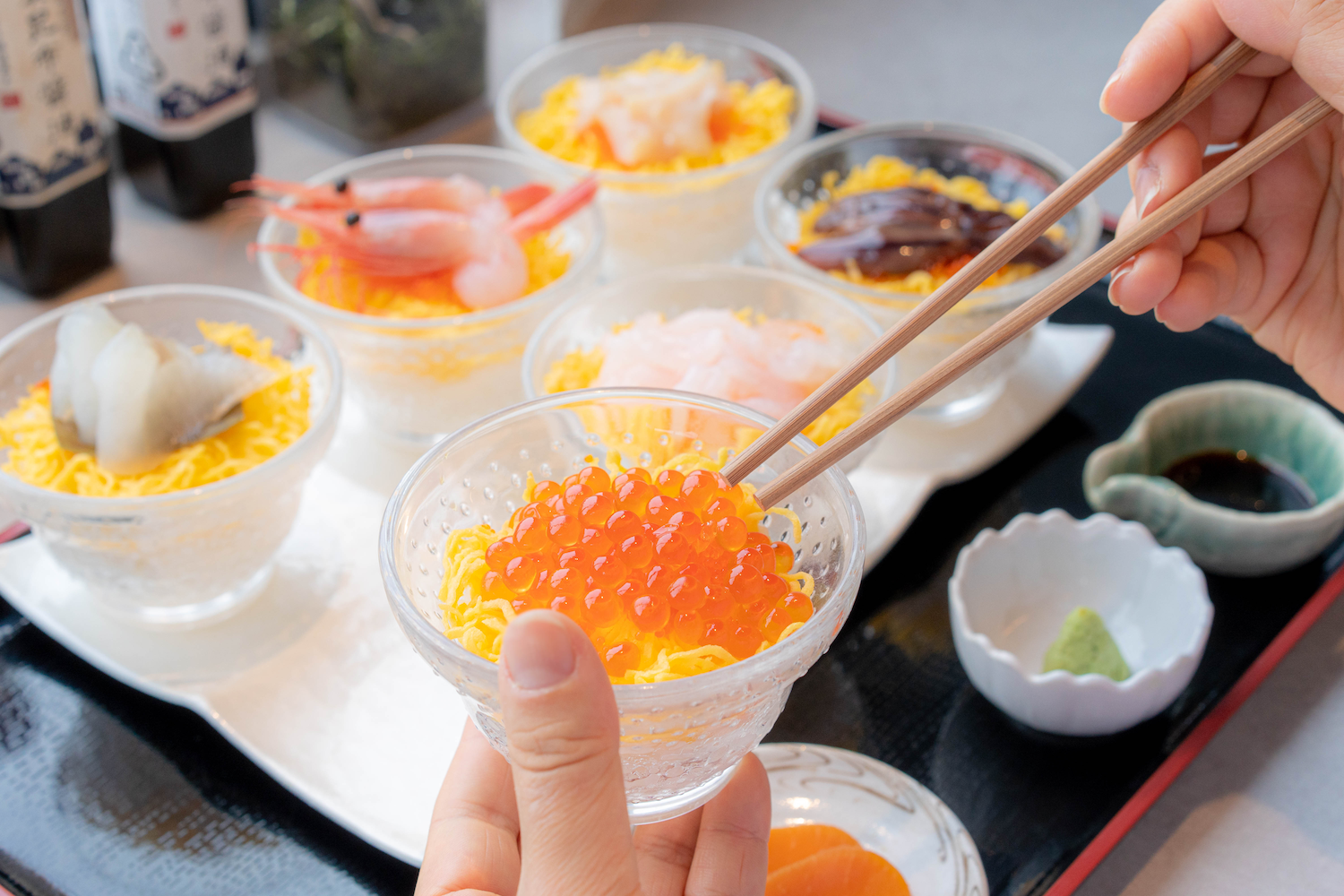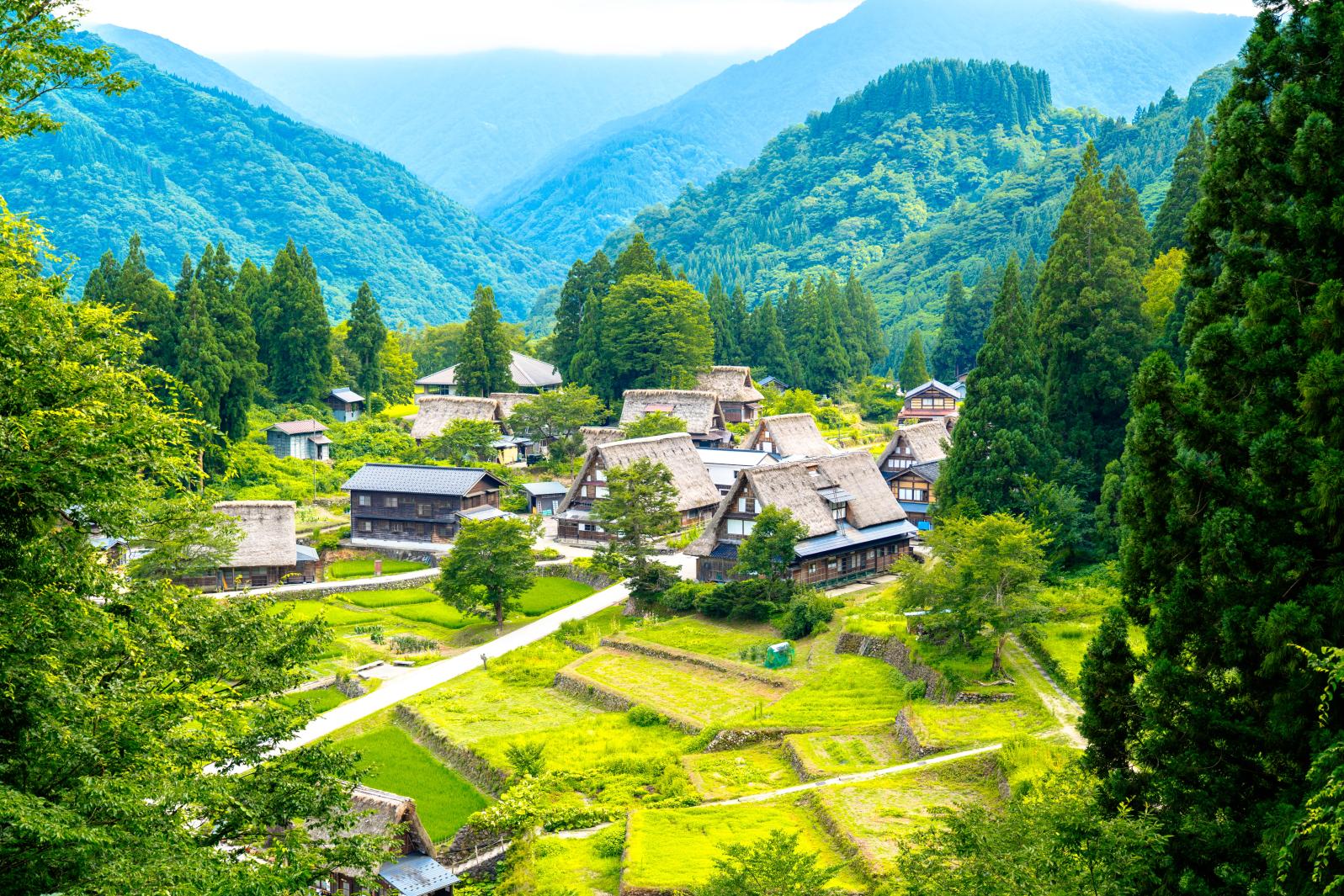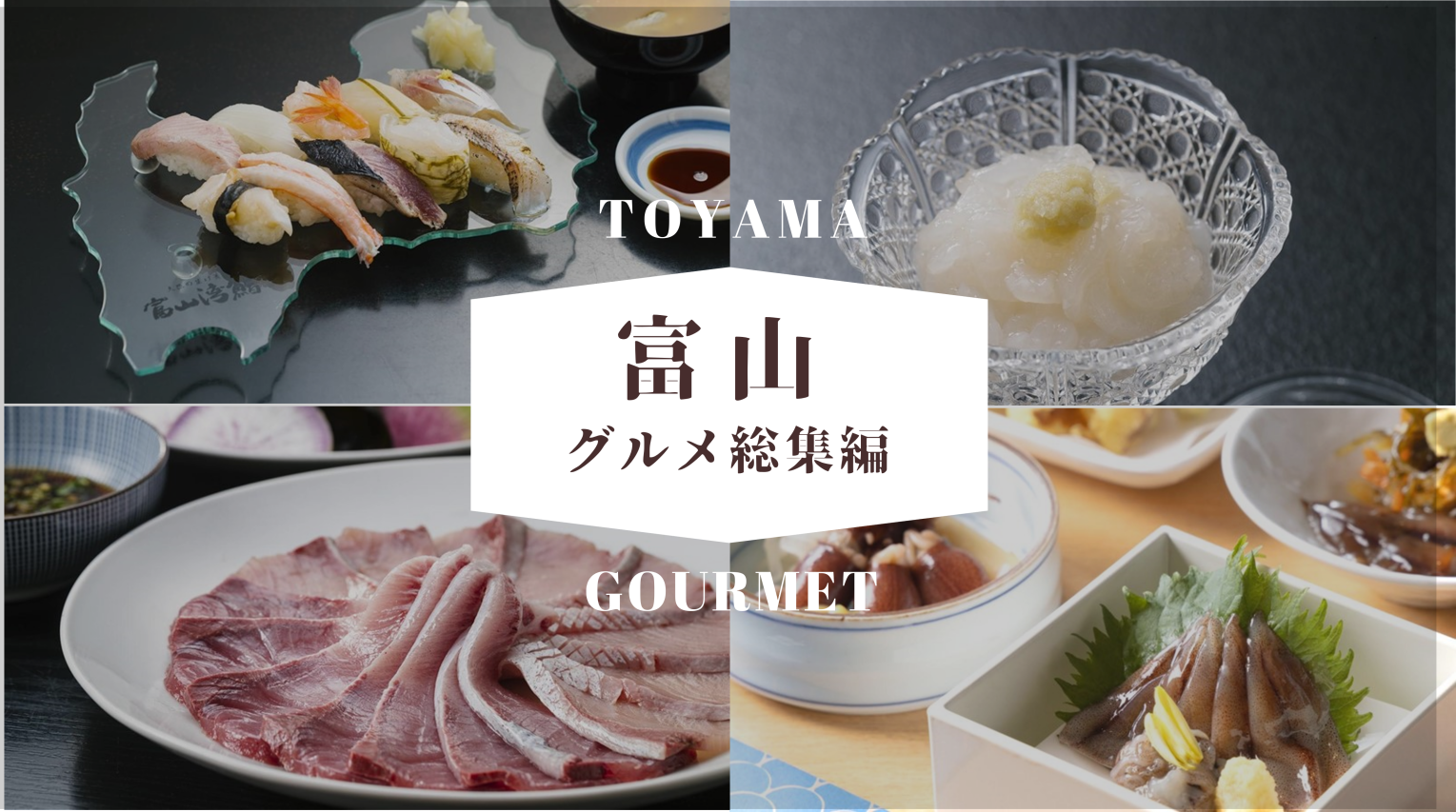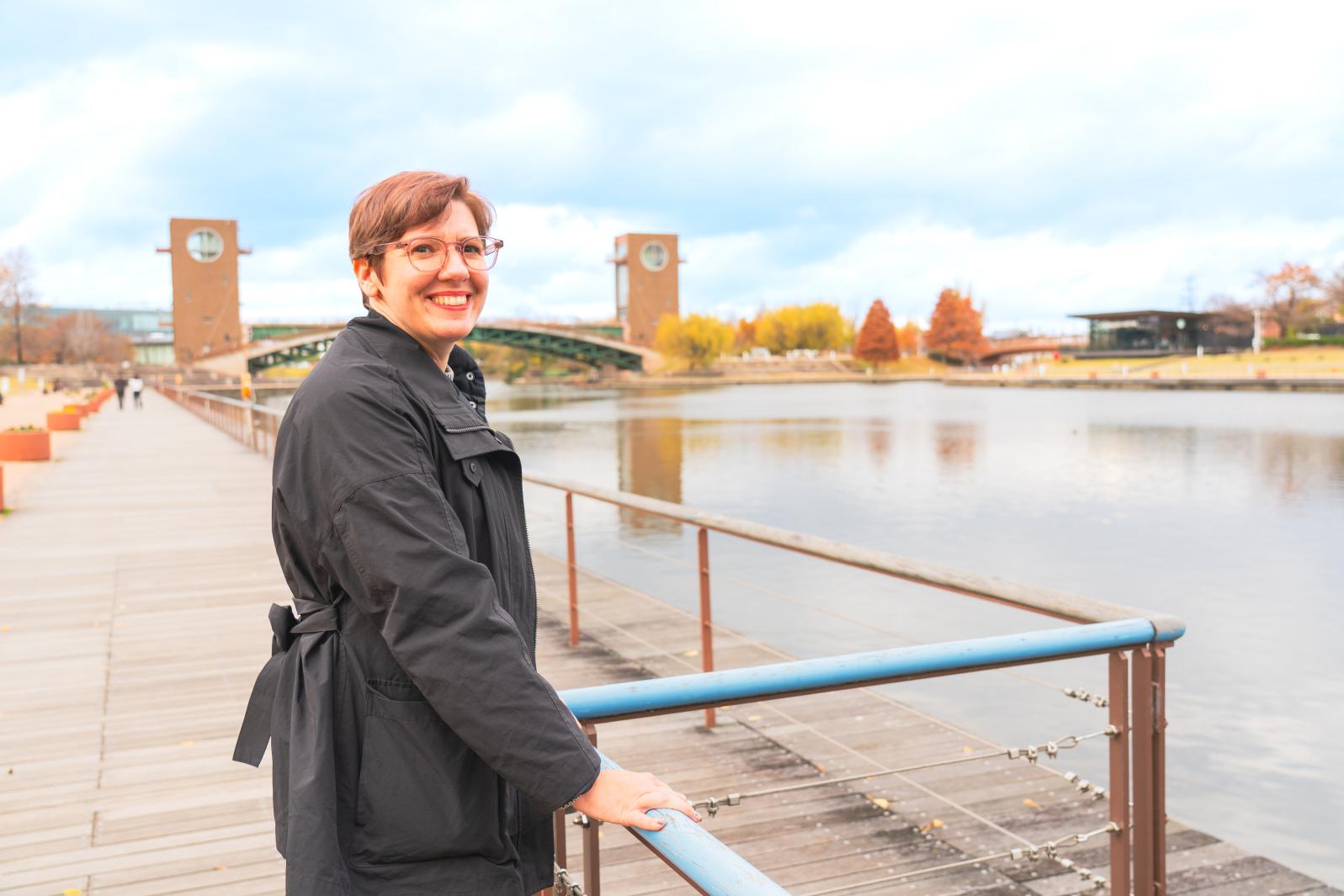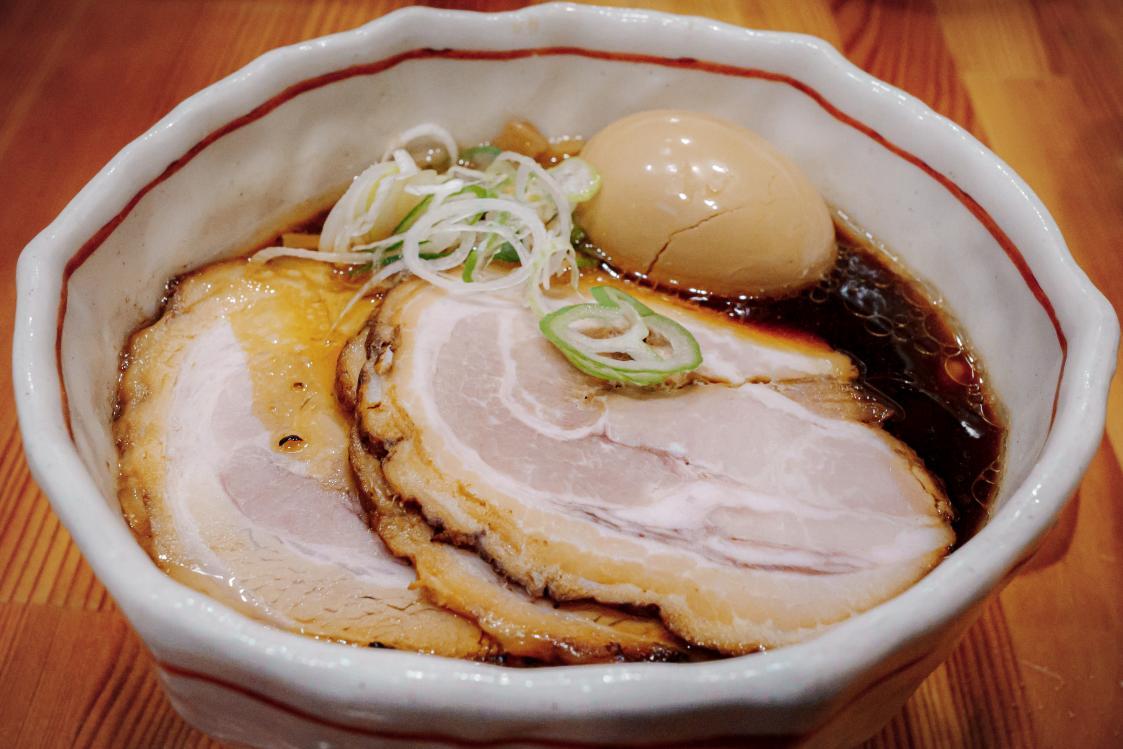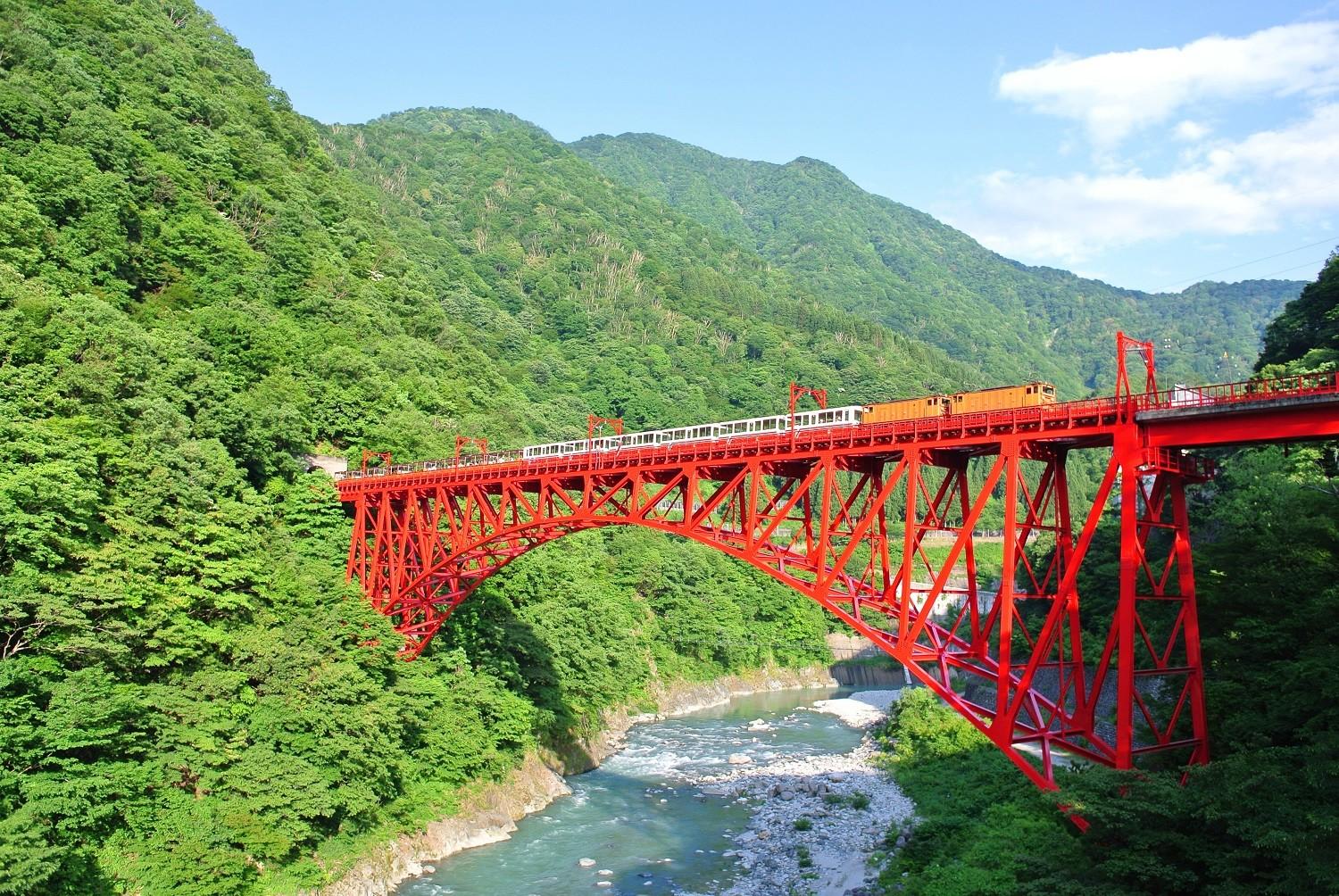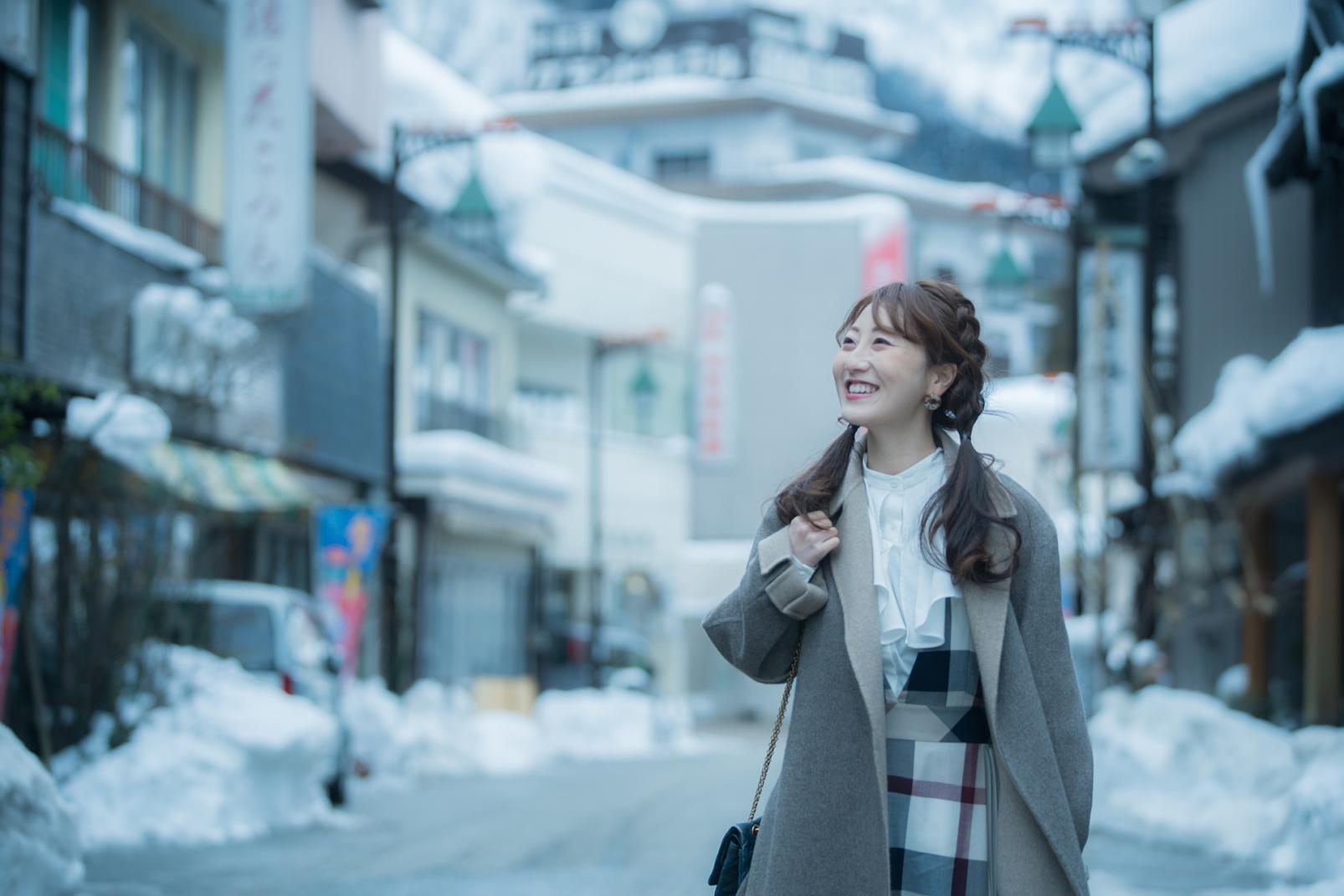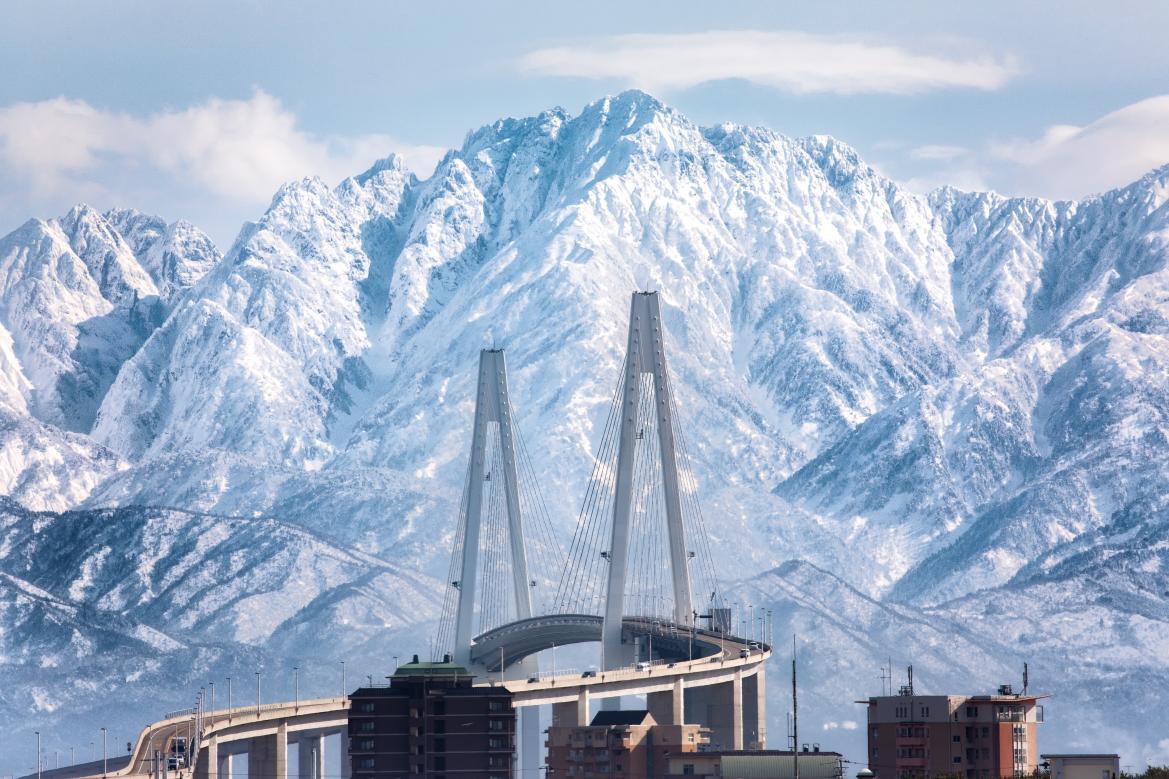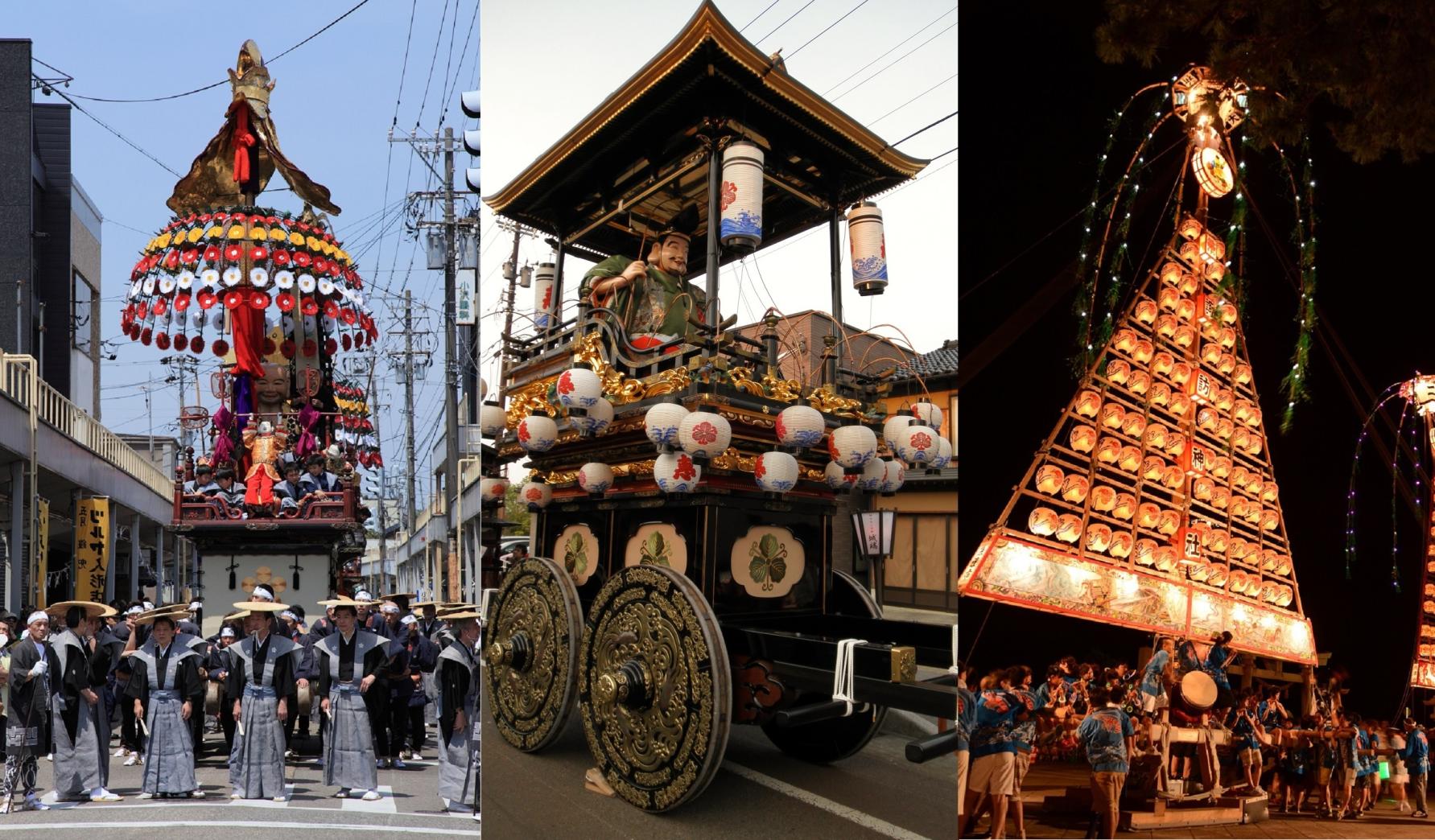
UNESCO Intangible Cultural Heritage - Festival traditions passed down through the generations
Did you know that there are 22 UNESCO Intangible Cultural Heritage traditions registered from Japan (as of July 2021)? In the “Yama, Hoko, Yatai, float festivals” category, Toyama Prefecture received three mentions for its incredible festival traditions that have been passed down from generation to generation.
The three festivals honored by UNESCO are the Takaoka Mikurumayama Festival in Takaoka City, which has been held since the 16th century, Johana Hikiyama Festival at Nanto City’s Johana Shinmei-gu Shrine, and the Tatemon event at Uozu Tatemon Festival.
Read on to learn more about the history, culture and best ways to enjoy these fantastic festivals in Toyama!
Takaoka Mikurumayama Festival
The Takaoka Mikurumayama Festival is an enthralling display of Takaoka's proud history and cultural splendor.
Held annually on May 1, seven floats called 'Mikurumayama' parade through the old city of Takaoka with an elegant musical accompaniment.
The festival is said to have originated in 1588, when the imperial carriage used by Toyotomi Hideyoshi to welcome Emperor Go-yozei to Jurakudai Palace was bestowed upon Maeda Toshiie, the first lord of the Kaga domain. When his successor, Maeda Toshinaga, built Takaoka Castle in 1609, he gifted this extravagant carriage, or 'Mikurumayama', to his townspeople.
The eye-catching Mikurumayama is often referred to as a "moving museum”. The lavish wheels, railings, and long handrails showcase the excellent craftsmanship of Takaoka's goldsmiths, lacquer craftsmen, and dyeing and weaving industries. The Kaga domain’s excessive wealth and rich craft culture enabled the float to be built in the opulent 'Momoyama' style, the teachings of which have been passed down to the present day.
The sight of the flamboyant floats being pulled along to a graceful musical accompaniment have continued to attract crowds of people for centuries.
Column
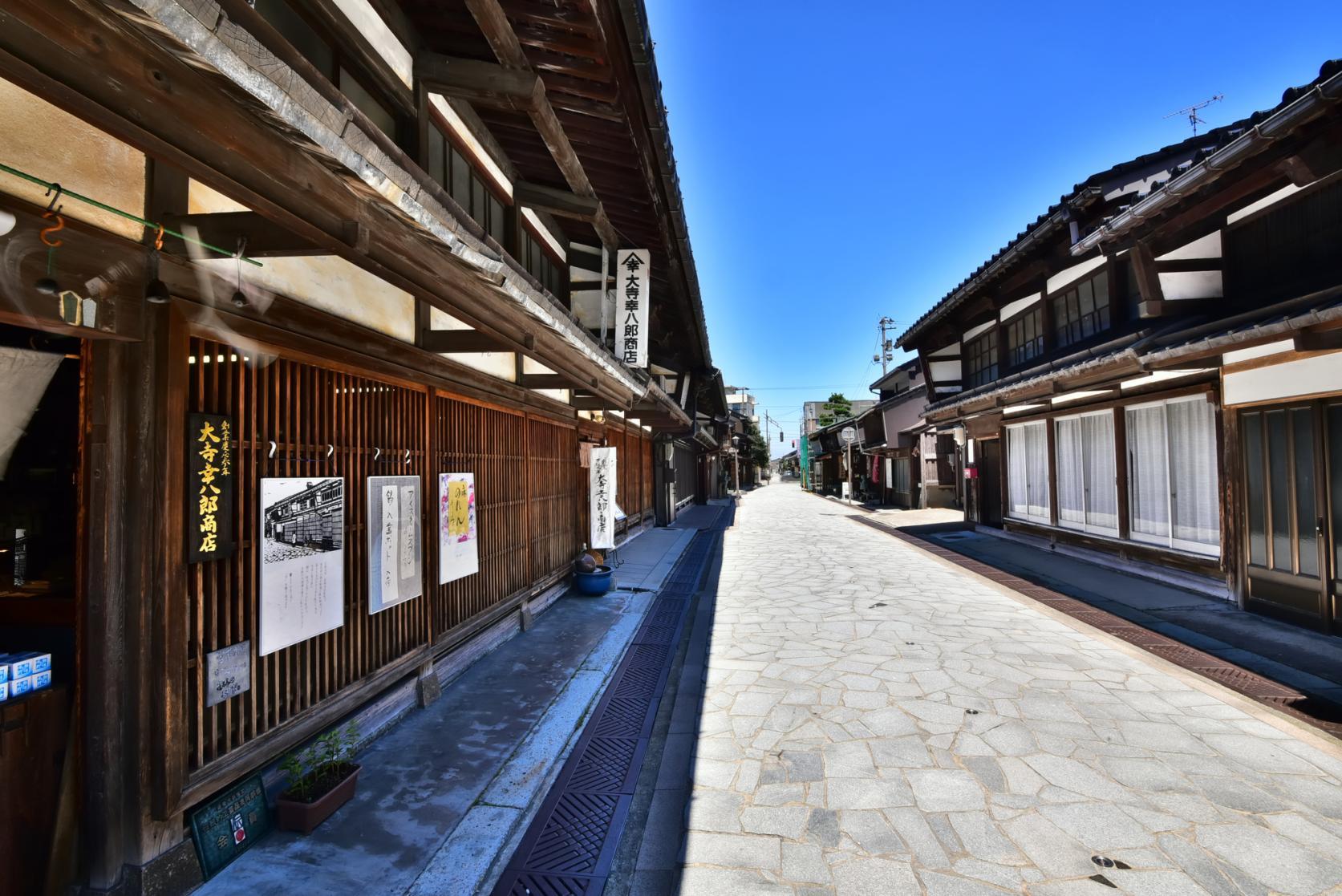
Takaoka, a city of craftsmanship
Takaoka's manufacturing culture spans a long history of 400 years.
Takaoka copperware, which boasts the top market share in Japan, is said to have begun when Lord Maeda Toshinaga established a foundry to ensure the prosperity of the castle area. Initially, the foundry focussed on producing daily necessities such as pots and kettles and farming tools such as hoes and plows, but gradually the area’s Buddhist bells and Buddhist ritual implements grew in popularity both in Japan and abroad. Over time, Takaoka’s artistic value became well known, with Takaoka copperware incense burners, flower vases, tableware, and accessories still widely popular today.
Another quintessential Takaoka craft, Takaoka lacquerware, began in the same period with the production of chests and other furniture. The lacquerware produced in the region became unparalleled in elegance and beauty after incorporating techniques from China.
In the center of Takaoka City, there are many stores displaying these traditional crafts, as well as workshops where visitors can try their hand at creating their very own piece of Takaoka artistry.
Takaoka Mikurumayama Festival: Nearby must-see spots
Take a stroll through a historic townscape where Takaoka craftsmanship is on proud display.
-
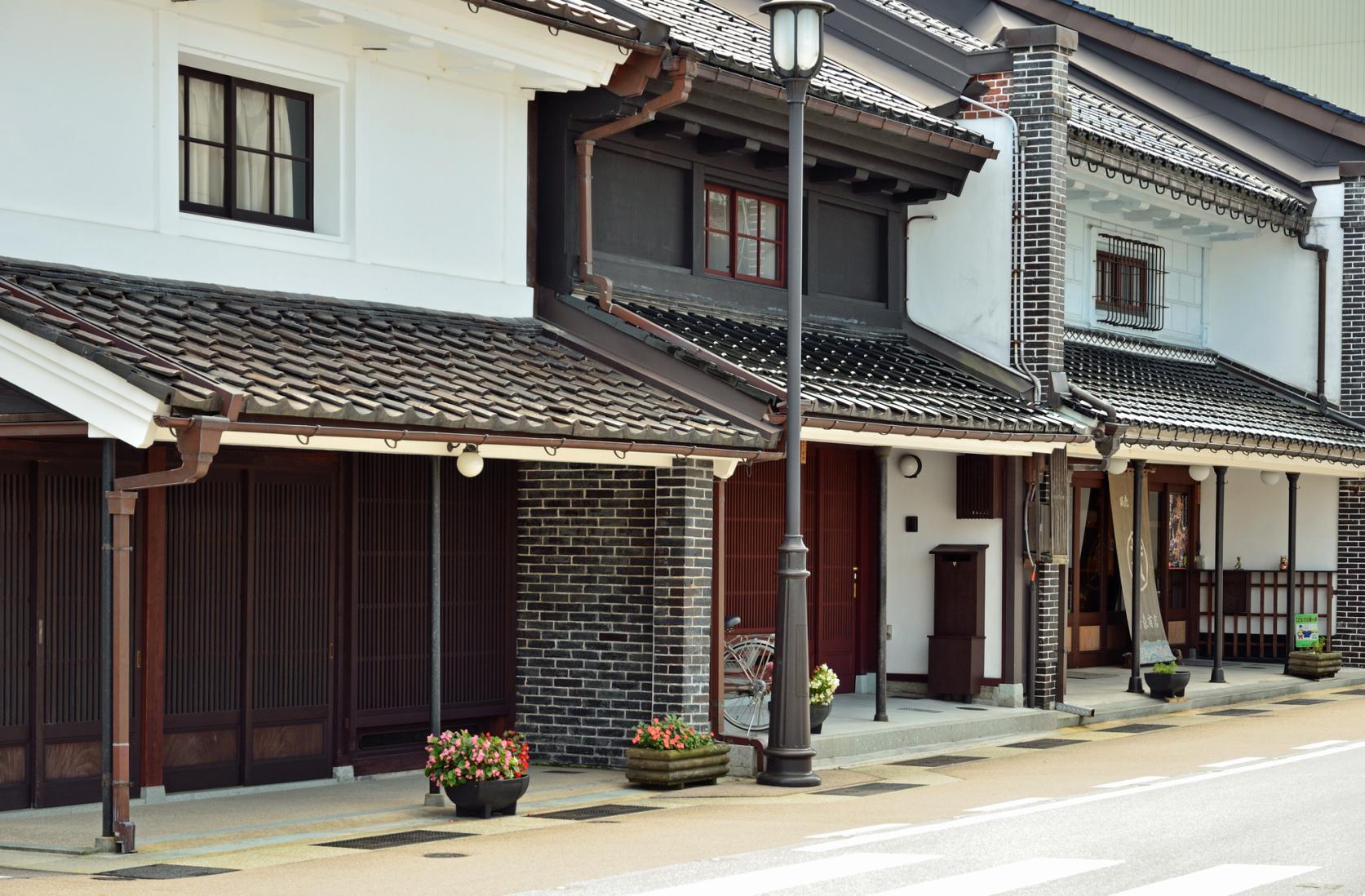
Yamachosuji (Street lined with earthen-wall storehouses)
Houses built in the traditional dozo-zukuri (earthen-wall) style line the former Hokuriku Road in this classic neighborhood. The historic townscape has been selected as a national Important Preservation District for Groups of Traditional Buildings. Floats are paraded against this scenic backdrop during the Takaoka Mikurumayama Festival.
-
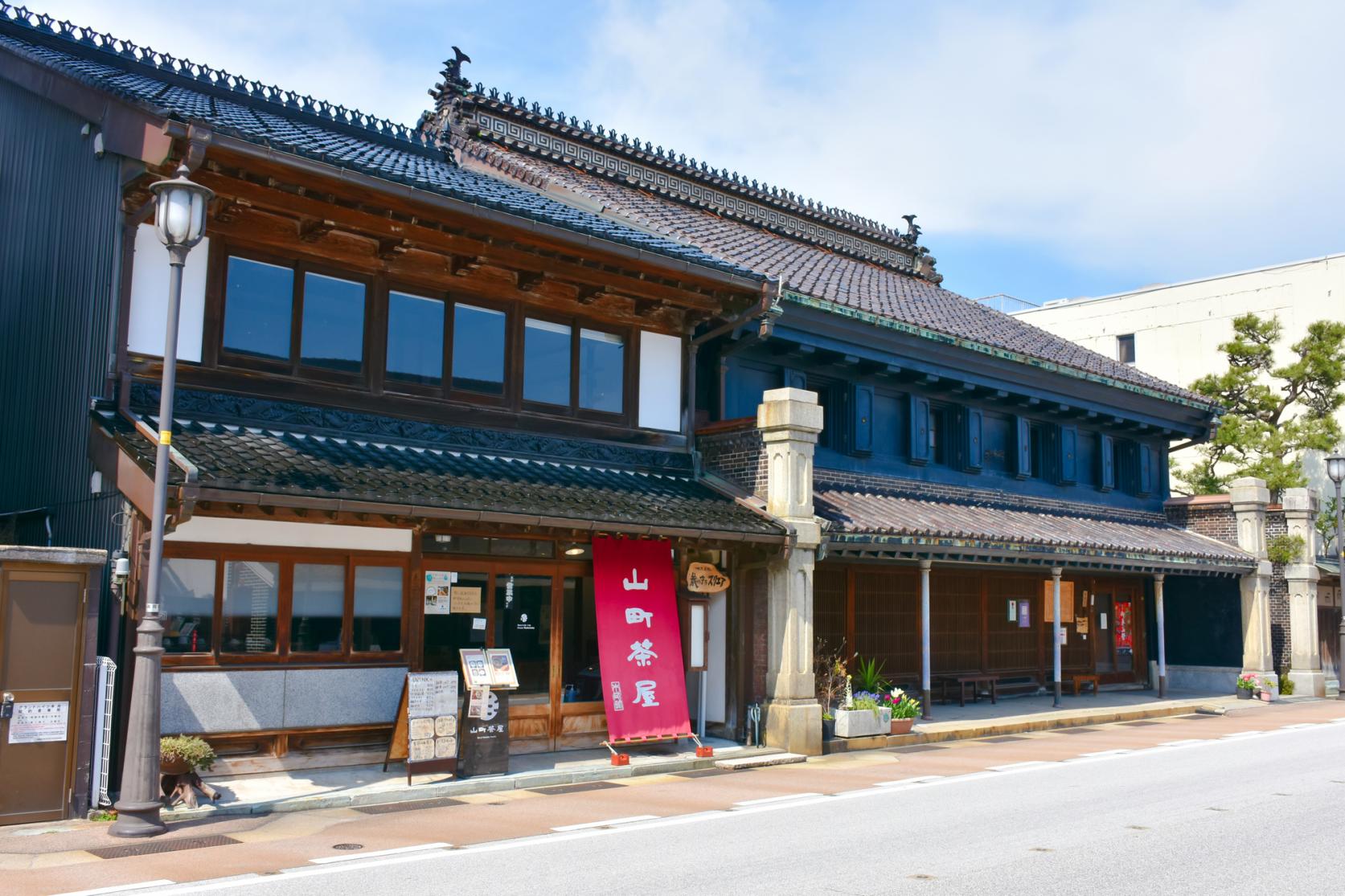
Takaoka Mikurumayama Museum
Lavish Mikurumayama floats are displayed at this museum throughout the year. Each one incorporates various Takaoka crafts, which are further detailed in exhibitions showcasing the crafting tools and methods. Visitors can also view karakuri puppets, listen to the Mikurumayama festival music, and relive live footage of the festival in a 4K high-definition theater.
-
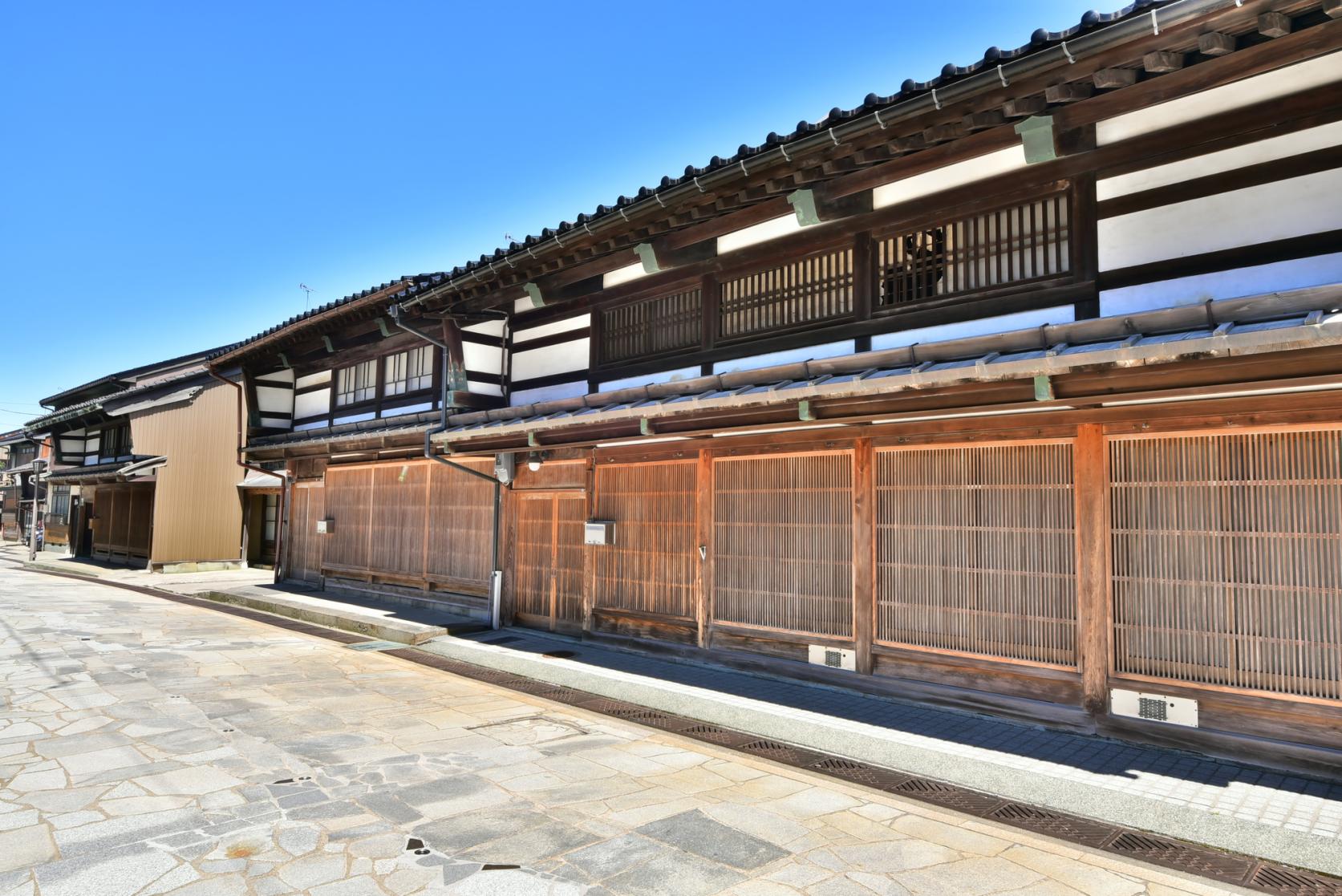
Kanayamachi (rows of latticed houses)
Kanayamachi is the oldest district in Takaoka. The rows of houses boast a beautiful retro atmosphere, with a thousand lattices that perfectly complement the quaint cobblestone-paved streets. The town is also the birthplace of Takaoka's casting industry, and there are stores where visitors can try their hand at making castings.
-
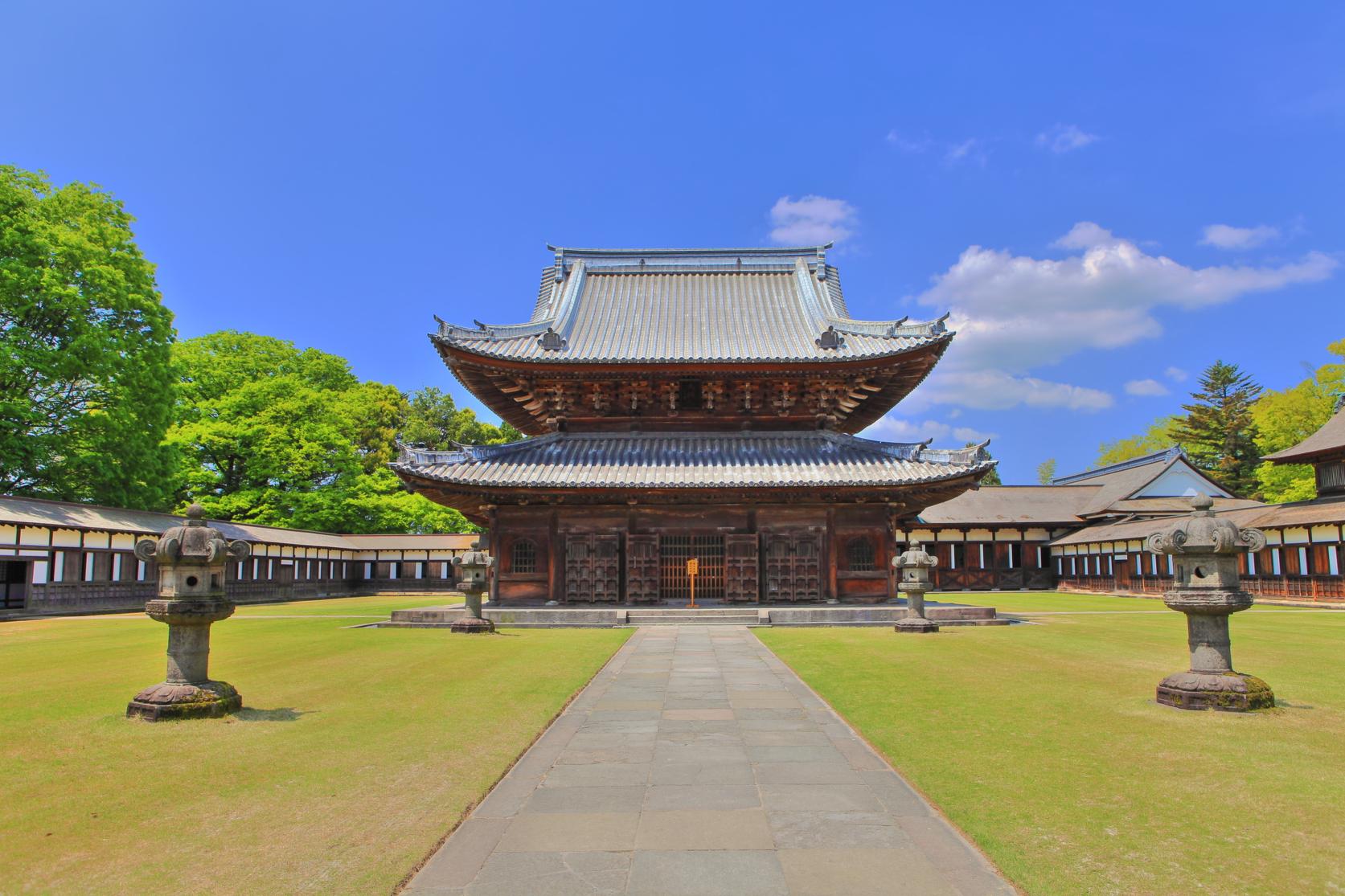
National Treasure Kokozan Zuiryu-ji Temple
This temple was built to commemorate Toshinaga Maeda, the second head of the Kaga domain’s Maeda clan. The extravagant temple buildings are truly a sight to behold, with the Sanmon gate, the Buddha Hall, and the Lecture Hall all designated as National Treasures. Visitors to Zuiryu-ji can immerse themselves in the architectural beauty of Zen Buddhism temple architecture from the 17th century.
-
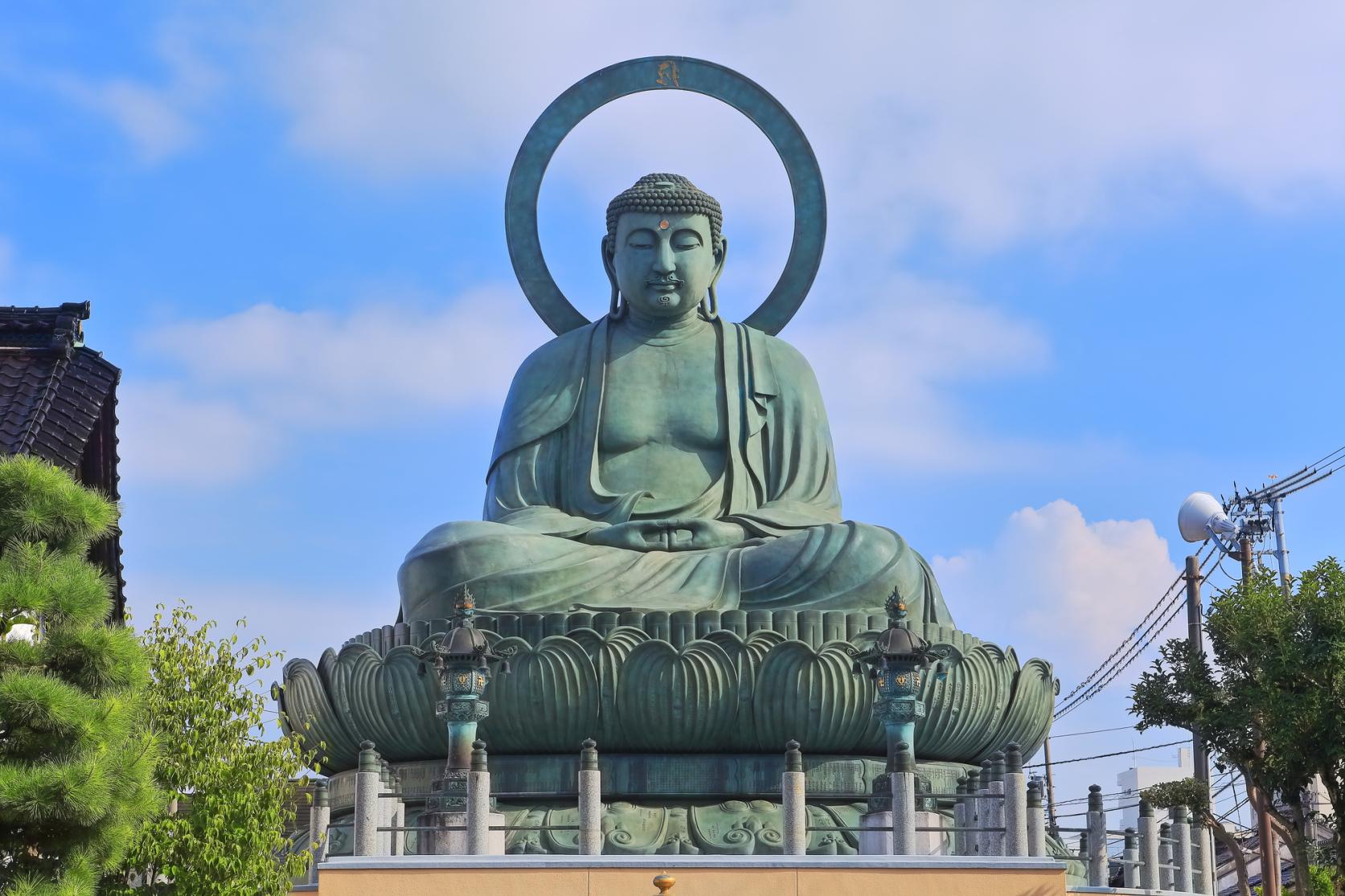
Takaoka Great Buddha
The iconic Takaoka Great Buddha was completed over a period of 26 years utilizing only the best in local copperware manufacturing technology. It is one of the three Great Buddha statues in Japan and is often nicknamed "the most beautiful man in Japan" due to the excellent workmanship.
-
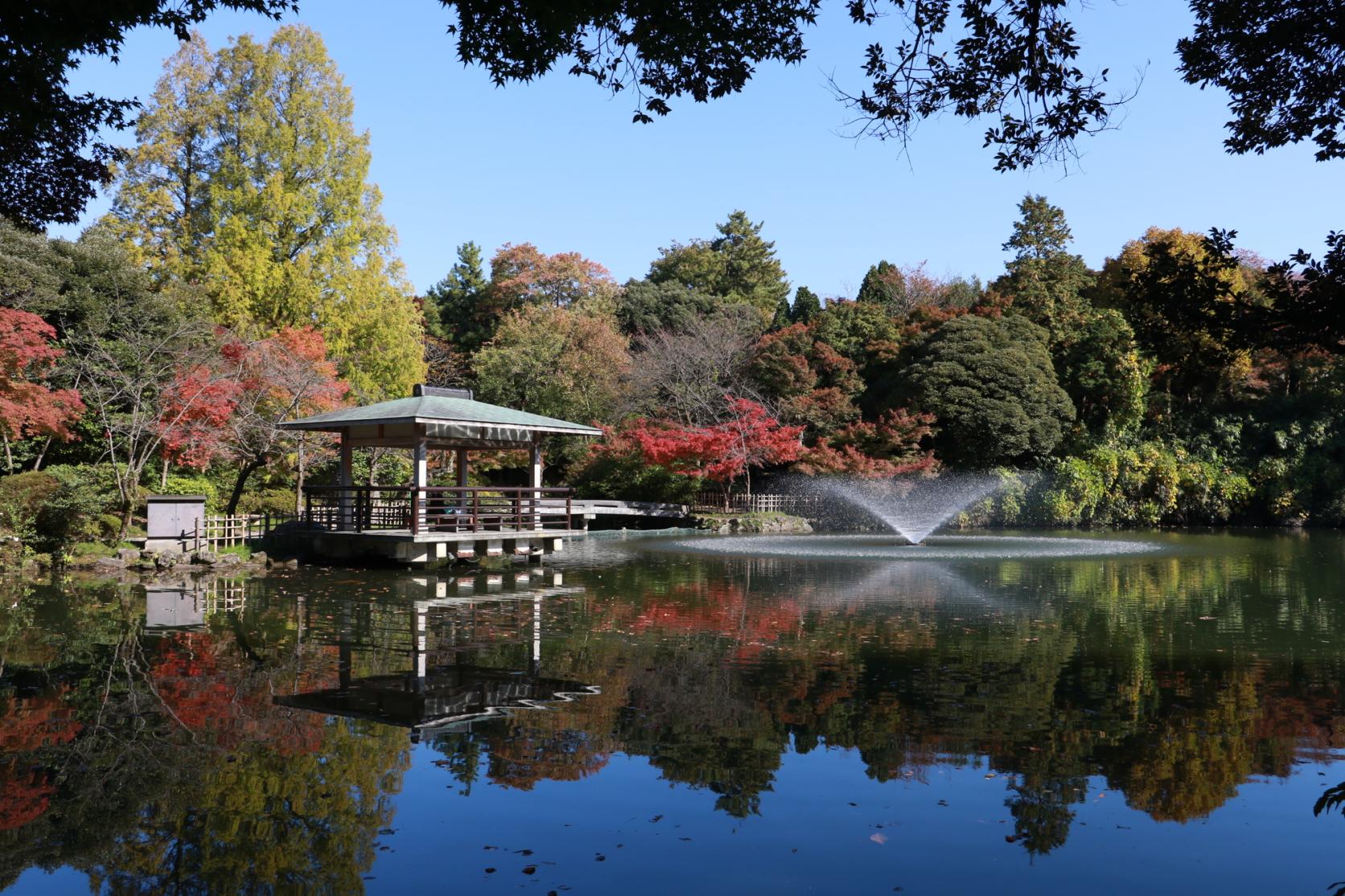
Takaoka Kojo Park (Takaoka Castle Ruins)
Takaoka Kojo Park houses ruins of once great Takaoka Castle, built by Toshinaga Maeda, the second head of the Kaga domain’s Maeda clan. The old castle grounds are now a park, popular for strolling and sightseeing. The park is centered around Honmaru Square, where a number of sculptures and other works showcasing Takaoka craftsmanship have been installed. It is also famous for its beautiful cherry blossoms.
Johana Hikiyama Festival
The 300-year-old Johana Hikiyama Festival brings springtime color and splendor to the small town of Johana, a traditional townscape known as “Etchu’s little Kyoto”.
Held annually on May 4 and 5, six fantastical floats decorated with beautiful Johana lacquerware, detailed wood carvings, and glittering gold leaf, carry statues of deities and parade through the town. The moving sight of the big wheels turning as the floats roll through continues to draw crowds year on year.
Each float is led by an 'ioriyatai', a float modeled after the Ichiriki teahouses of Gion, Kyoto. The floats are accompanied by the sounds of shamisen, bamboo flutes, and taiko drums, and the singing of Johana’s unique 'iori' songs.
At night, the floats are illuminated by bright lanterns, creating a new and exciting atmosphere different to the daytime parade.
One of the highlights of the May 4 ‘Yoimiya’ is the 'kazariyama' decorated floats at each float stand, which welcome the gods without any statues.
Step back in time to 300 years ago and enjoy the Johana Hikiyama Festival!
Column

Stroll through the streets of “Etchu’s little Kyoto”, Johana!
Johana once flourished as the town surrounding the Johana Betsuin Zentoku-ji Temple. The area is often referred to as "Etchu’s little Kyoto” thanks to its traditional architecture, which includes rows of storehouses built for wealthy merchants in the 18th century, quaint lattice-door townhouses, and cobblestone-paved streets. Why not take a leisurely stroll along the slopes and alleys reliving the old-fashioned scenery?
Johana Hikiyama Festival: Nearby must-see spots
Take a stroll through a historic townscape and discover Johana craftsmanship!
-
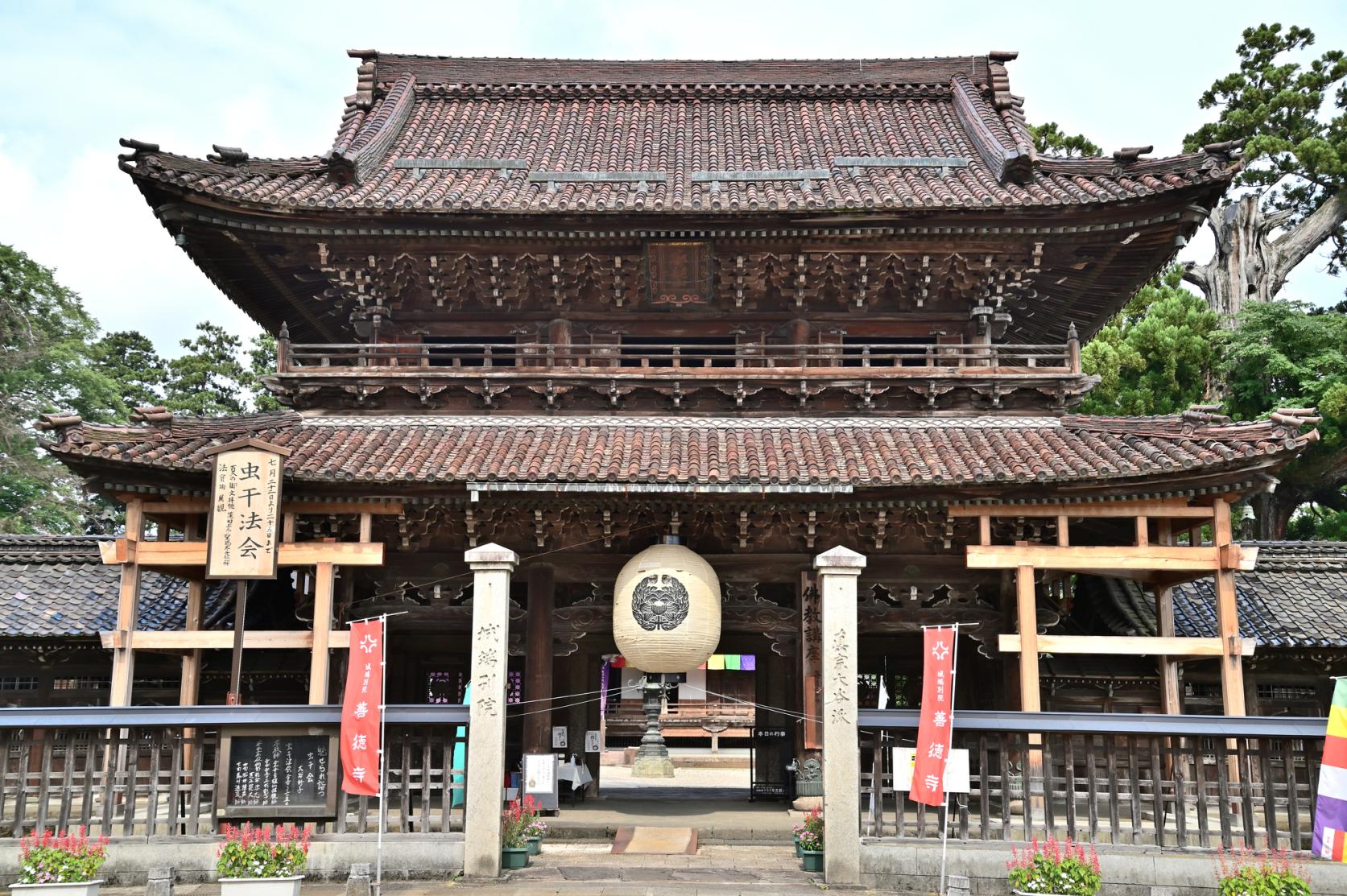
Johana Betsuin Zentoku-ji Temple
The 530-year-old Zentoku-ji Temple is a member of the Otani sect of Jodo Shinshu Buddhism. The temple owns more than 10,000 pieces of temple treasures, including the 'Yuishinsho' written by Shinran, the very founder of Jodo Shinshu Buddhism himself. Some of these pieces are open to public viewing during the ‘Mushiboshi Houe’ airing ceremony every July. In spring, the temple holds the ‘Weeping Cherry Blossom Festival’. The 370-year-old ‘Itozakura’ cherry tree is a must-see.
-
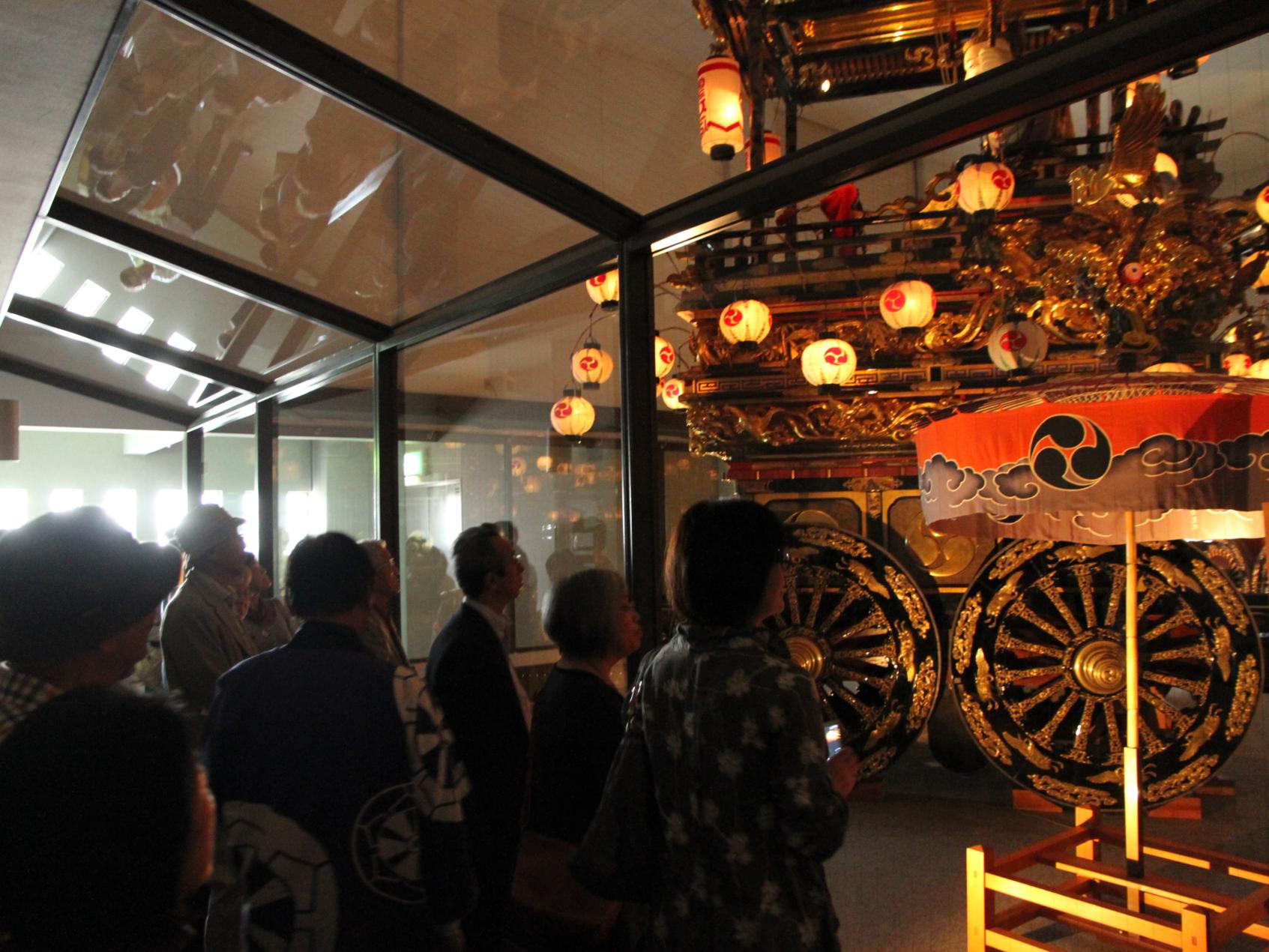
Johana Hikiyama Kaikan
Johana Hikiyama Kaikan is a museum dedicated to the history of the Hikiyama Festival, with Hikiyama floats, Ioriyatai floats, traditional umbrella poles, and more on permanent display. In the lobby, visitors can watch a moving video of the festival set to 'iori' songs.
-
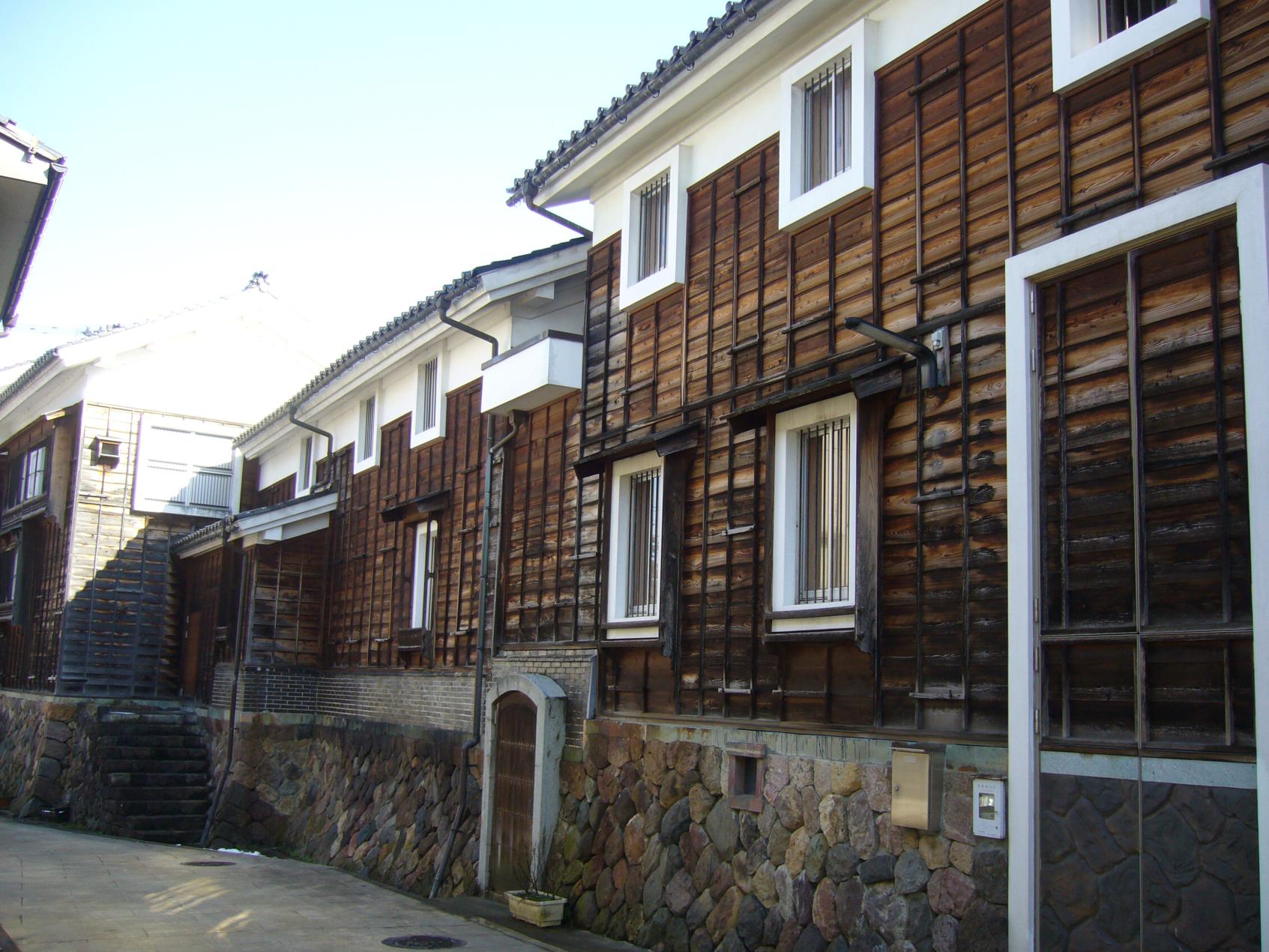
Storehouse Group "Kurakairou"
Four tasteful storehouses once owned by the wealthy merchant Nomura stand side by side in this beautiful part of “Etchu’s little Kyoto”. The Katsurayu building, with its retro stylings and copper plate walls, was once a public bathhouse, but now operates as a gallery displaying handmade accessories.
-
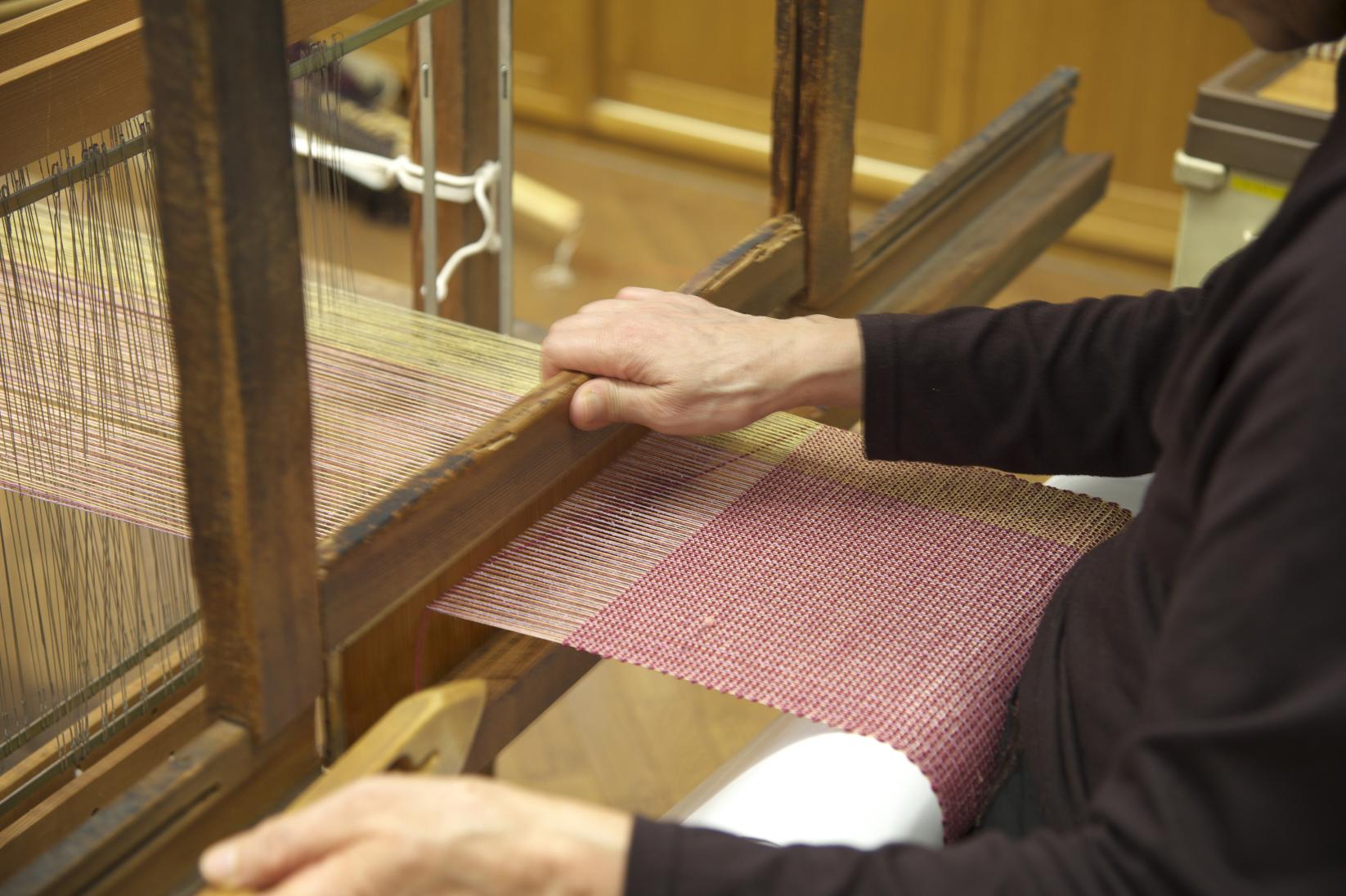
Johana Oriyakata Weaving
A weaving experience facility in a brick Western-style house built in 1928. Even beginners can enjoy authentic weaving at ease. The facility also has a store, café, and gallery. The building is registered as a national tangible cultural property.
Uozu Tatemon Festival
The Tatemon Festival is a local tradition that has continued in Uozu for 300 years.
It is held on Friday and Saturday of the Jantokoi Uozu Festival, the largest event in Uozu City that spans the first Friday, Saturday, and Sunday of August every year. This marine festival prays for a big catch and safety at sea, using seven 'tatemon' brought out from the fisherman’s shrine of Suwa Shrine.
A 'tatemon' is a boat-shaped lantern pulled by about 80 people. The huge structure is made up of more than 90 lanterns hung in a triangular shape from a 16-meter-high pole erected on a 10-meter-long, 5-ton stand.
Young people in traditional 'happi' coats pull the gigantic 'tatemon' around, causing the hundreds of lanterns to move beautifully through the summer night sky. The lanterns are pulled around with such vigor that they float in the air, and the group’s energetic shouts and taiko drum and flute accompaniment also ramps up the levels of excitement, sending the audience into a frenzy.
This fun festival is an indispensable summer tradition in Uozu.
Column
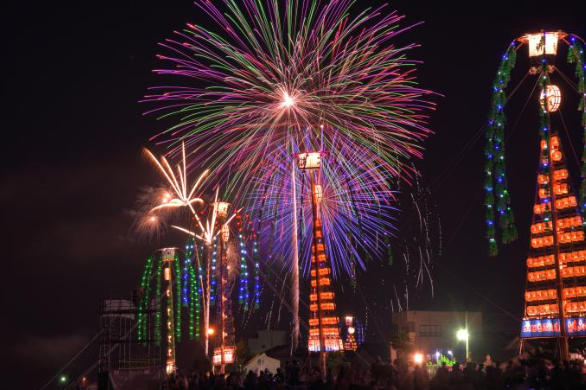
Enjoy a fireworks display during the same visit!
The ‘Sea Fireworks Display’ held on the second day of
the Jantokoi Uozu Festival features approximately
2,000 fireworks! Watch powerful fireworks launched
from a barge offshore decorate the skies for 40 whole
minutes. After this magnificent show of colors, head to
the Tatemon Festival for an even more exciting
summer evening!
Uozu Tatemon Festival: Nearby must-see spots
From mirages to fresh fish! Experience the charms of Uozu.
-
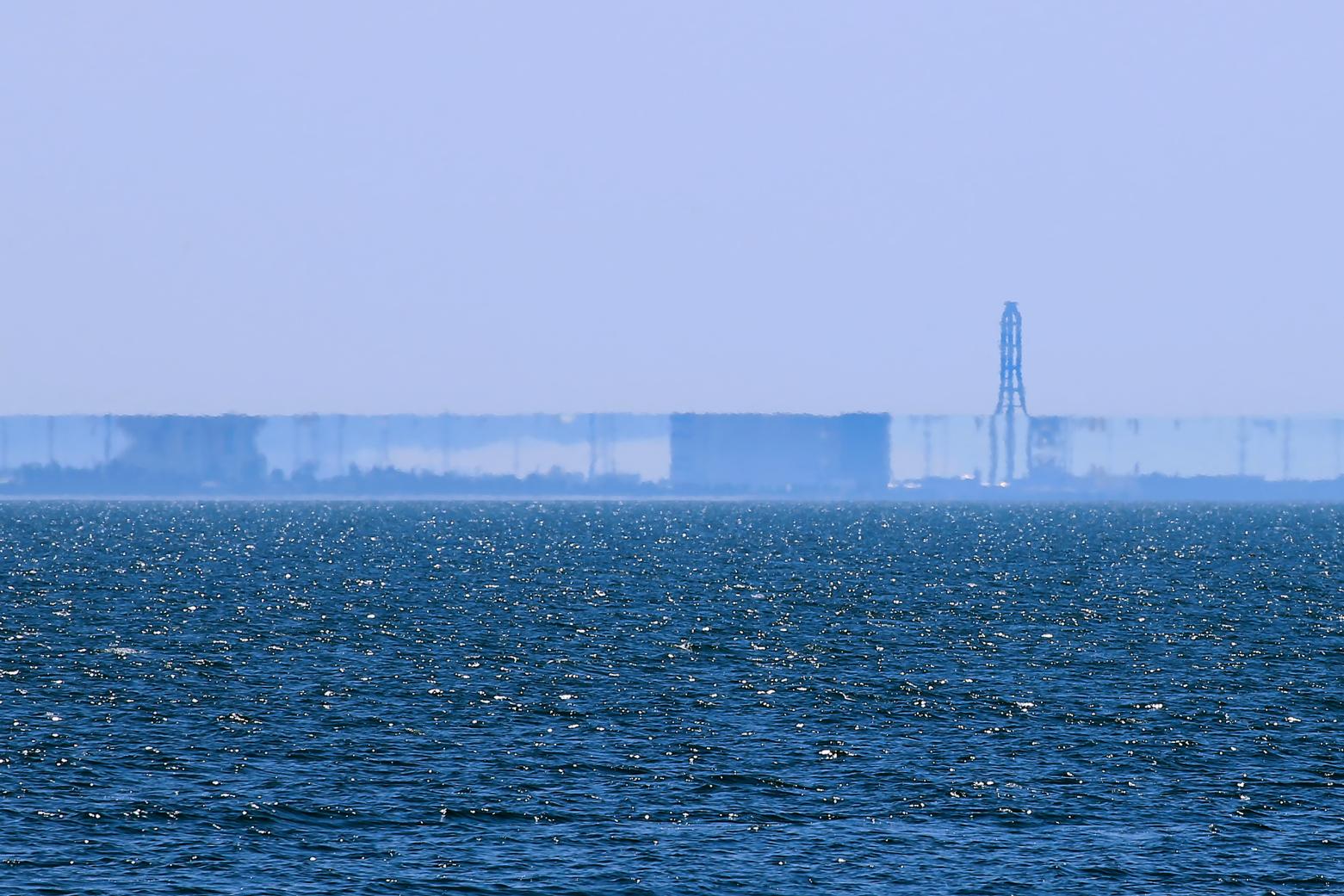
Mirage (Mirage Tower Observation Site)
A mirage is is a naturally occurring optical phenomenon that causes the scenery to shimmer and move due to the refraction of light. Uozu is famous throughout Japan for its amazing mirages. From late March to early June, many people flock to the beaches around Uozu Port to observe the fantastic scenery that stretches out across the sea.
-
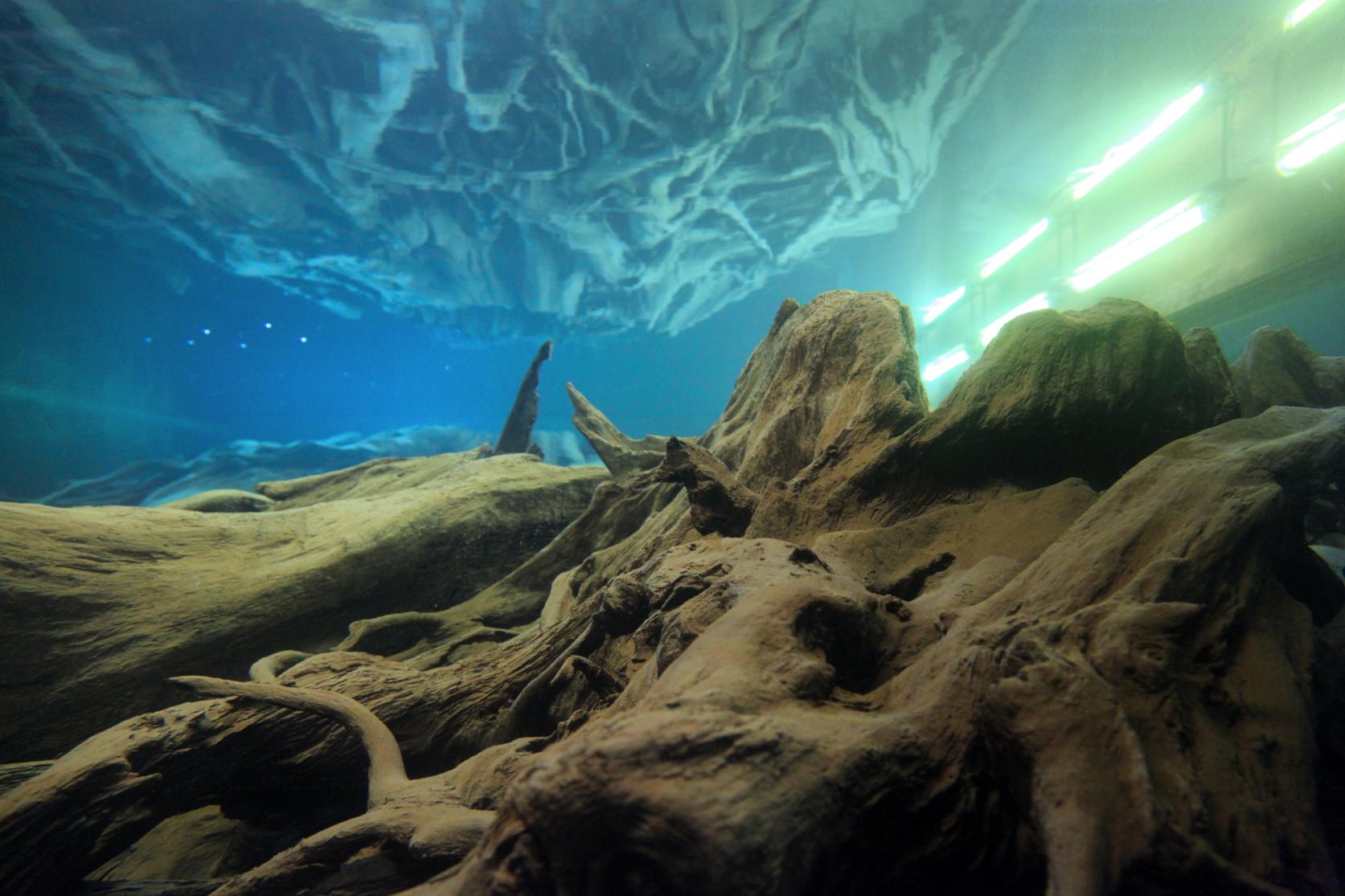
Uozu Buried Forest Museum
This museum is nicknamed 'Nekkoland' (“nekko” meaning “root” in Japanese). The museum preserves and exhibits the roots of a 500-year-old cedar trees that were buried approximately 2,000 years ago. In the underwater exhibition hall, the trees are displayed immersed in water, casting a mysterious appearance.
-
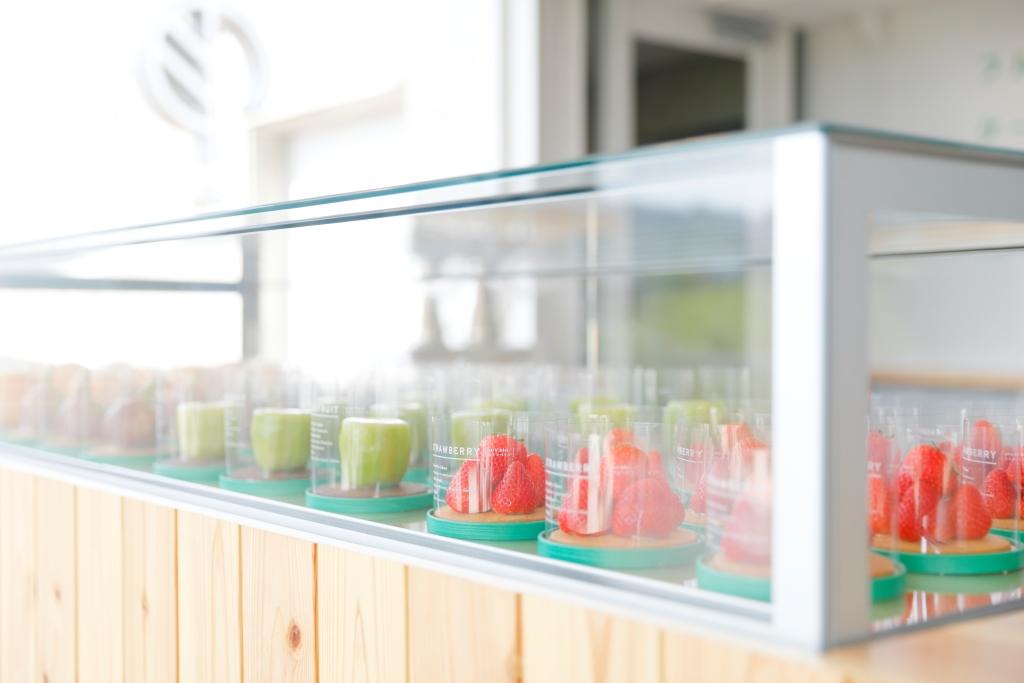
KININAL
This dessert take-out store is located in the Uozu Buried Forest Museum. The luxurious cakes are carefully crafted from whole foods and look and taste fantastic. Enjoy them as a snack at the museum's eat-in space or on the open terrace.
-
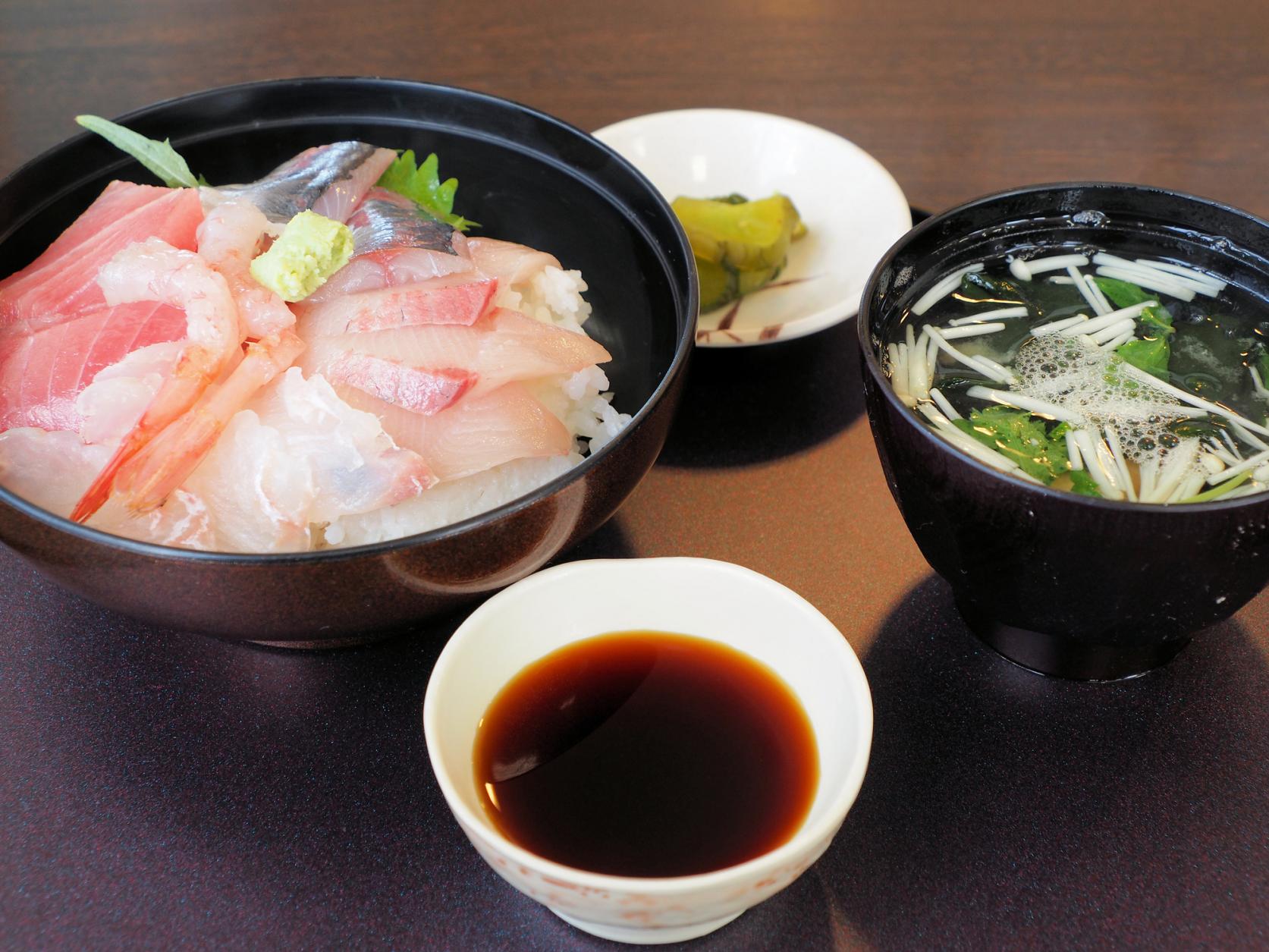
Roadside Station Shinkirou
This cozy roadside station sells fresh fish landed at Uozu Port, Toyama's specialties, famous confections, and folk crafts. The 'Hamayaki' grill event held every weekend is very popular, as well as the Uozu Fish Dealers Cooperative Association-run fresh seafood restaurant, 'Gengenbo'.
-
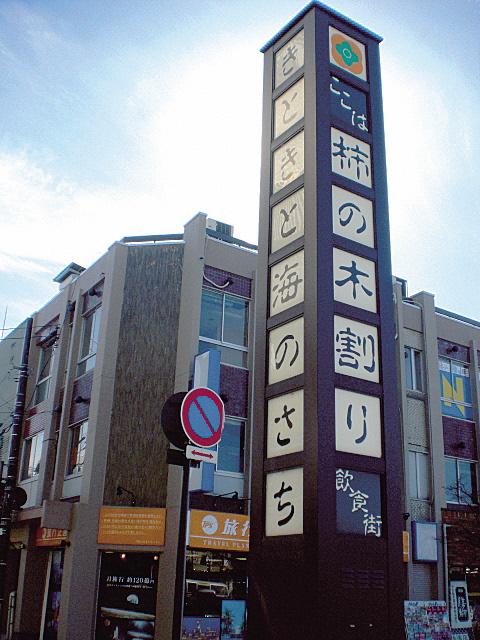
Uozu Station (Kaki no Kiwari) Restaurant District
Located just in front Ainokaze Toyama Railway Uozu Station is the largest concentration of restaurants in Uozu, known as 'Kaki no Kiwari'. There are more than 200 restaurants, including fish and sushi restaurants that use fresh fish caught at Uozu Port, as well as casual izakayas. There is food to suit every taste here!



